– S.P. Shukla
[S.P. Shukla is the current Chairperson of Dharwad’s Samaj Parivartan Samudaya. He served as the country’s finance secretary during VP Singh’s tenure. This article was written in March of this year, before the general elections were held.]
I
If one were to be led by the media, particularly the electronic media, it would appear as if there were only three options available in the forthcoming general elections: 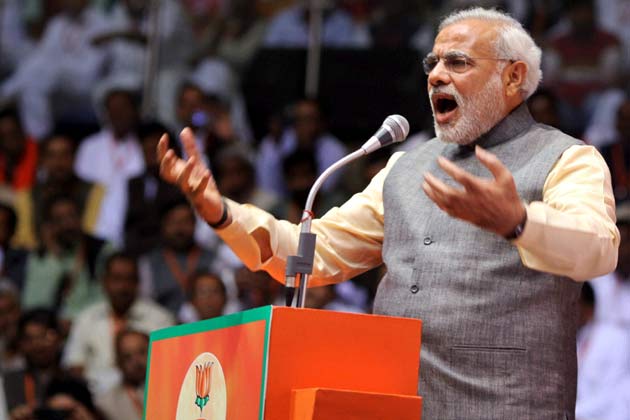 Narendra Modi, Rahul Gandhi and Arvind Kejriwal ! The options are being presented more as individuals and not as political parties to which they belong. There is not much debate on substantive issues of ideologies or policies and programmes. Discussions seem to center on slogans and catchwords like “ Development”, “ Governance”, “ Corruption”. It is difficult to recall such a draught of ideas and ideology in any electioneering in the past.
Narendra Modi, Rahul Gandhi and Arvind Kejriwal ! The options are being presented more as individuals and not as political parties to which they belong. There is not much debate on substantive issues of ideologies or policies and programmes. Discussions seem to center on slogans and catchwords like “ Development”, “ Governance”, “ Corruption”. It is difficult to recall such a draught of ideas and ideology in any electioneering in the past.
There are various reasons for this state of affairs. The dominance of electronic media which takes the brevity of the attention span of the viewer as an article of faith is one reason. But there are other more important factors. The emergence of a whole new generation which takes for granted the achievements of independent India and aspires for the standard and style of living of the rich world is another. Their aspiration is about the glittering end result, not about the arduous process of realizing it. Employment opportunities provided by the IT and IT- related services and numerous possibilities of education and training abroad ( USA in particular) opened to the upwardly mobile sections of the youth have tended to set the tone of the debate. Globalisation essentially means Americanization for these vocal segments. Choice of individuals a la presidential elections in USA tends to become integral part of their political thinking. So also the functioning of the two party system in USA  so pithily described by GoreVidal: “We have a single party system with two right wings to choose from !” Our governments of different political hues too have followed similar economic policies. They have encouraged the same predatory process of capital accumulation and all it entails including venality and corruption. That has discredited leading functionaries of governments, irrespective of the political parties to which they belong, giving rise to a general disenchantment with the political process which marks this segment of the youth. And above all, there is always the fatal charm of the tendency to lazily simplify everything, even the most complex issues and situations.
so pithily described by GoreVidal: “We have a single party system with two right wings to choose from !” Our governments of different political hues too have followed similar economic policies. They have encouraged the same predatory process of capital accumulation and all it entails including venality and corruption. That has discredited leading functionaries of governments, irrespective of the political parties to which they belong, giving rise to a general disenchantment with the political process which marks this segment of the youth. And above all, there is always the fatal charm of the tendency to lazily simplify everything, even the most complex issues and situations.
The net result is trivialization of the debate on policy issues and the phoney choice being presented to the electorate.
What are the issues and concerns of the people at large? Do the catchwords and slogans even as much as touch these issues?
II
Let us first take up the catchword of ‘Corruption’. We can perhaps say that we have an unusual national consensus on the question of corruption. The reasons for such consensus are not far to seek. For one thing, it is always “they”, not “us”, who are venal and corrupt. Therefore, it is a safe and elevating posture attracting universal support. More importantly, seizing the symptoms and remaining afloat is easier than risking a deep dive to clutch at the invisible roots. It is safer too because, who knows, the deeper one goes, the more tangible may become one’s entanglement with the roots!
Corruption, bribery, venality, fraud : they are as old as rock. So the pain and the resentment they cause too are abiding sentiments. This way of looking at these issues gives us no understanding of what is happening in our times , nor a clue as to why is it happening.
Not too long ago, we were told that the dirigiste regime of licenses and permits was the mother of all corruption in government. That regime is long gone and buried in the history of more than two decades of the “economic reforms”. And we are witnessing the emergence of the monster of “corruption”, in a form and on a scale, never dreamt of before. Has the virtue suddenly disappeared from all those who are manning the governmental machinery? If we make a reasonable assumption that the incidence of virtue and vice does not change drastically over a couple of decades, what would account for the emergence of mega- corruption in the recent times?
What distinguishes the present times from the four long decades of the so-called mixed economy or the dirigiste regime is the appropriation by the market of the policy making functions of the government. The chief architect of the economic reforms once stated candidly that the process was intended to “release the animal spirits” of the Indian entrepreneurs. He has, however, chosen to remain silent about the predatory nature of the animal!
The market which is dominating the policy making sphere is not the abstract, mythical, imaginary model of the competitive market of industrial entrepreneurs. The contemporary reality is nowhere near the model. The economic reforms essentially implied growing integration with the global economy under the sway of the global finance capital. This process required giving a virtually free hand to the global capital into our real as well as financial economy, irrespective of the consequences of such a policy for the working people, particularly the marginalized sections of our polity. On the one hand, this induced in our financial economy our own versions of casino economy and bubbles which produced a series of scams and scandals. On the other, it encouraged primitive capital accumulation by predatory capital. Land, minerals, natural gas, water, spectrum : all irreproducible natural resources are systematically being thrown open to appropriation by those who have the requisite “animal spirits” and clout of capital. The result is before us. Since the value of such resources is virtually immeasurable, the scramble for their appropriation is unprecedented and ruthless. What prevails in such a situation is not the competitive environment of the text book but the law of the jungle. Or even worse. For the law of the jungle does not appropriate the future; it is always confined to the moment of existence. The predatory capital accumulation tends to appropriate even that which belongs or should, in all reason , belong to the future. Stakes are unusually high both for the gainers as well as the losers. It follows that nothing is sacrosanct. No one is spared. Invocation of ethical principles has no place. Propriety is passé. The system being predatory par excellence, regulatory mechanism becomes impotent. And the political process becomes evasive or hypocritical or both. So we have the biggest scam where the regulatory mechanism was perhaps the best designed. Equally we have the ministers preoccupied with procedural nitty-gritty when they ought to be protecting peoples’ wealth of natural resources from marauders at large.
We said earlier that stakes are unusually high for the gainers as well as losers. It was in the narrower inter- se context of the predators at large. But that statement is truer and even more apt in the larger and far more real context of the people to whom the predatory system has thrown an unprecedented challenge. No amount of intra- systemic regulation can cure the prevailing system. No appeal to morality and ethical principles will dent the system because its predatory foundation shapes its morality. What is needed is the wholesale replacement of the present system by a people- centric system where the natural resources are socially owned and controlled, where the co-operation rather than competition characterizes the economic organization , where the collective weal (including in the ‘collective’ the coming generations and the survival of the planet) replaces the predatory instinct and the animal spirits and where the development signifies a journey from ‘the realm of necessity’ to ‘the realm of freedom’. And it is the working people , now at the receiving end of the present system, who alone can be the agents of such a transformation.
III
Recently the Aam Admi Party(AAP) made a big hullabaloo about the FIR that their government filed against the Reliance and others for a criminal conspiracy to get very high price for natural gas recovered from Kaveri- Godavari basin. Leaving aside the false claim that AAP was the first to uncover the scam (CPM/CPI had been very vocal in exposing this scam even before AAP was born), the fact of the matter is that the criminal conspiracy to defraud the government is a direct outcome of the adoption of the neo-liberal policy framework for energy exploration and exploitation. Under that framework, the market fundamentalism is the guiding principle. The profiteering is sacrosanct. The welfare of the people is no concern. The ruling UPA has adopted that framework. BJP has no qualms about that either. AAP who claims to be against all scams fights shy of questioning the underlying policy framework. The only action that it took was to file a criminal case, knowing fully well that it was not just a simple case of fraud and scam. Even if the criminal charge is upheld( about which no one can be sure at this stage), the root cause viz. the natural resource belonging to the people of India being handed over on a platter to big capital for making unconscionably high profits, will remain untouched. It is not just that AAP fights shy of raising the basic questions. Their supreme leader has no hesitation in repeating the old Thatcher-Reagan-Bush cliche that ‘government has no business to be in business’. And he is careful to add that he is ‘not opposed to capitalism’. All he is worried about is the criminal offence and a remedy in a law-court to a matter which needs a totally different economic policy framework . It is clear that AAP which considers itself as a third option is really not any option at all. All the three so-called options are simply (to borrow Gore Vidal’s unforgettable formulation) “three right wings” of the same pro- big capital politics.
IV
AAP has made an attempt to nuance its position by qualifying that it is against “crony capitalism”, not capitalism per se. Let us examine this apparently nuanced argument. The term “ crony capitalism” came into wide currency after the South Asian economic crisis of mid- nineties. The argument put forward was that in South Asian economies, the governments were promoting their cronies and thus distorting or preventing the play of market forces. The assumption here was that interference in the market process by the rulers was a new phenomenon typical of the South Asian Economies. And if the markets were left to themselves, such crony capitalists would have bitten dust and vanished to make room for healthy competition among good capitalists. Even a graduate student of economic history would know that the intertwining of interests of the rulers and the big capital is as old as history of capitalism. The emergence and growth of capitalism, first commercial and then industrial, were rooted in the state support. Whether it was the “robber barons” in USA or the big usurpers of the agriculture lands in UK , they were recipients of direct or indirect support of their governments. The contemporary situation in the heartland of capitalism i.e. USA is no exception. Indeed in USA, there is no question of ever challenging the big capital. On the contrary, there, the governments of the day go to the extent of making wars to promote the interest of big capital. It is enough to recall the role of big companies like Halliburton and Bechtel that received billion dollar contracts in Iraq after the war and the unconcealed interest that the then vice- president of USA had in such deals.
The financial crisis of 2008 was the most recent and unvarnished episode illustrating how capitalism ‘works’. The ascendancy of speculative finance capital characterizes the current phase of capitalism as a global system. The crisis ensued under the benevolent eye of the US Federal Reserve. There was unbelievable collusion between the so-called independent agencies such as credit rating organizations, big banks, insurance behemoth, markets for derivatives and mangled remnants of the regulatory mechanism. The only thing that motivated them was ‘bigger and quicker buck now’. The bigger the operator, the greater the leverage it exercised not only on the market but also the government and its agencies. While Lehman was allowed to bust, the bigger sharks like Bear Stearns and AIG were bailed out at the expense of the state exchequer. Indeed the “too big to fail” still marks the financial system. And the government of the day, irrespective of whether it is the Republican or Democratic, behaves exactly the same way, that is to say, it goes all the way to bail out the very perpetrators of the crisis and even reward them. If there was still any doubt how and for whom the capitalist system works, or any lingering hope that the system can be worked in the interest of the ‘common people’, the recent financial crisis should provide incontrovertible evidence that there are no good or bad, honest or dishonest, greedy or self-denying capitalists: there are only those who pursue their profits and interest by hook or crook and there is no arms- length relationship between governments and capitalists.
Interestingly, under the entry on ‘Crony Capitalism’, Wikipedia gives a whole lot of examples from three continents: Peoples Republic of China, , India, Indonesia, Argentina, Brazil, UK (especially in early years), USA, Malaysia, South Korea, Israel, Russia, Greece. The list is obviously not complete and other names will be added.
The simple fact is that nowhere capitalism is free of cronyism; indeed it can not be. By their very nature, the present institution of the State and the big capital are closely intertwined. The text book picture of honest entrepreneurs acting freely on their own in a fully competitive market over which they have no power or control is as imaginary as the Euclidian definitions of a point or line. They simply do not exist.
In our own case, early years of post- independence era witnessed the rise of the Birla group in diverse industrial fields. And the active support of the government to the group was obvious. In the initial phase of the emergence of capitalism in India, the House of Tatas played a prominent role. The capital that they employed to start industrialisation process in British India had ,at least partly, its origin in the profits in the opium trade forced on China by the imperial powers and the speculative gains made in the cotton market in the aftermath of the civil war in USA when the cotton supplies to Manchester and Lancashire mills were interrupted.  The more recent and far more phenomenal rise of the Reliance Group is not without government support in one way or the other. It would be interesting to analyse changes in the fiscal and trade policies effected by different governments in the last thirty five years or so and co-relate the growth curve of the Reliance to the changes in those policies. And this notwithstanding the strong and sometimes successful action taken by some politicians and bureaucrats to foil the aggrandizing moves of the Reliance !
The more recent and far more phenomenal rise of the Reliance Group is not without government support in one way or the other. It would be interesting to analyse changes in the fiscal and trade policies effected by different governments in the last thirty five years or so and co-relate the growth curve of the Reliance to the changes in those policies. And this notwithstanding the strong and sometimes successful action taken by some politicians and bureaucrats to foil the aggrandizing moves of the Reliance !
Capitalism knows no honesty or morals as AAP seem to think fondly. That system works in a different paradigm altogether. Criticizing “Crony Capitalism” but accepting capitalism is chicanery, if not dishonesty.
It is apt to recall here what Noam Chomsky has to say on the subject:
“ The comment that you quoted, “crony capitalism,” and so on — what’s capitalism supposed to be? Yeah, it’s crony capitalism. That’s capitalism, you do things for your friends, your associates, they do things for you, you try to influence the political system, obviously. You can read about this in Adam Smith. If people read Adam Smith instead of just worshipping him, they could learn a lot about how economies work. So, for example, he’s concerned mostly with England, and he pointed out that in England, and I’m virtually quoting, he said the merchants and manufacturers are the principal architects of government policy and they make sure their own interests are well cared for, however grievous the effects on others, including the people of England.
“Yes, it’s their business. What else should they do? It’s like when people talk about greedy capitalists, that’s redundant. You have to be a greedy capitalist or you’re out of business. In fact, it’s a legal requirement that you be a greedy capitalist and that you don’t pay attention to what happens to anyone else. You know, it’s not just Ayn Rand, that’s the law. So, these complaints don’t make any sense….”
( “Black Faces in Limousines:” A Conversation with Noam Chomsky: Noam Chomsky interviewed by Joe Walker, Joe Walker Blog, November 14, 2008)
V
The myth of the ‘development’ agenda too needs to be exposed. The simplistic thinking equates ‘development’ with better roads, reliable supply of electricity , adequate supply of drinking water , preferably through pipe- lines. And, of course, better remuneration in existing jobs and new opportunities of employment. This is not wrong. But it is superficial understanding. Development ‘for whom’ and ‘how’ is the real question. The mainstream thinking is that development will come through the jobs created by the private sector. And for this , the private capital must be encouraged through enhancement of its opportunity to make profits. Both Congress and BJP are unanimous on this. And AAP is no exception. The experience of the last three decades is that with all the encouragement available to the private sector, employment has not expanded to clear the backlog of unemployment or absorb the new entrants to the pool of job seekers. And the disparity in the wealth and income has touched intolerable levels, not imaginable even in recent past. The experience world over is not different, although the capitalist countries in the idustrialised world had witnessed episodes of uplifting of living standards of the working people, which were a unique product of very special historical circumstances, not replicable in the third world.
If development has to have meaning for the large majority of our working people, we must first see how half the workforce survives. First and foremost condition of development is the resolution of the agrarian crisis. Unfortunately none of the three claimants for the peoples’ mandate in the forthcoming elections has much to say on this issue.
The most important issue before India is land and peasantry. The arable land is shrinking. Agricultural production and productivity is stagnating. More than fifty percent of our working force is dependent on agriculture which contributes less than fifteen percent of GDP. Forty percent of those dependent on agriculture for livelihood have no land. Eighty five percent of the remaining sixty percent have holdings which are small or marginal. Agriculture for this vast deprived majority is a loss- making proposition. This vast majority of peasantry holds forty- three percent of agricultural land whereas the paltry eight or nine percent hold fifty- seven percent of such land. Globalisation of the Indian economy with its agenda of integrating Indian agriculture with the global agri-business and opening up the agricultural land for grab by corporate capital, indigenous as well as foreign, has only further exacerbated the agrarian crisis.
The effect is visible in the large scale land grab, through the market operation as well as through the operation of land acquisition procedure. Superficial solutions are sought through more liberal compensation and mandated resettlement and rehabilitation of those dispossessed and displaced . But such symptomatic treatment only sidetracks the main problem. Land Acquisition question is only a sub- set of the bigger issue of the Land Question.
Following is the six point agenda to deal with the Land Question.
- Moratorium on sale, transfer or assignment of agricultural land to corporate capital for non-agricultural , corporate agricultural or contract farming purposes.
- Convening a National Land Use Commission immediately to consider the question holistically and lay down principles and criteria for scientific, pro-people use of land in different agro-climatic zones of the country.
- Supporting Cooperative farming in a big way where pooling of land will help promote scale economy and remove the root cause of economic non-viability of farming for the overwhelming majority of the peasantry thus defeating the game of the corporate capital. Using the surplus labour generated in the process in input producing/providing and output processing manufacturing industry to be located in or near the agricultural hinterland.
- Bring back the land reforms on the agenda, end the still surviving remnants of absentee landlordism, redistribute such surplus land and government land still available and eliminate landlessness
- Resist the Corporate Capital’s game of furthering their land grab through the WTO and Agreement on Agriculture.
- Recognition that in respect of land ( and similar other social assets), there is no alternative to Socialisation of ownership.
On the question of generating more employment, action is called for at two levels: at the constitutional level and at the economic policy level.
Directive Principles of the Constitution have already recognized the right to employment and life of dignity. It must now be made enforceable fundamental right. This will require that the industrial policy be refashioned radically. Currently the goal of global competitiveness guides the policy makers. It suits the interests of big capital. That should be replaced by industry which is employment- promoting and mass consumption oriented. Moreover, massive expansion of health, housing and education sectors should be undertaken which will go a long way to absorb the unemployed. All this will require a pro- active and interventionist role by the government. None of the three contenders for power through the upcoming elections have propounded such an approach , nor will they as can be judged by their policy statements.
VI
Even more misleading is the raging debate on the issue of “Governance”. The first question to be asked here too is “ Governance for Whom and by Whom?” The unstated message in the present debate is that all challenges to the current model of development through integration with the global economy should be effectively liquidated. That is the wish of the small percentage of people who have benefited from the prevalent system as never before. They are afraid that the fast widening chasm between the masses and the ruling classes will lead one day to the system being challenged and overturned by those exploited by the system. They want their wealth and incomes to be protected by the State at any cost. For them, preservation of the sanctity of contract and zealous protection of property rights must constitute the overriding priority of the state and the most important, if not the sole, function enjoined on it. Like the “crusade against corruption”, the slogan of “governance” too has attraction for wide sections of the so-called ‘aspirational’ new generation as well as numerous unthinking or superficially thinking elements. For the ruling classes though, it is crystal clear that while the “crusade against corruption” is essentially a means of reducing transaction costs of the business, the slogan of “ Governance” is a code name for suppression of all democratic dissent and ruthless liquidation of the challenge developing from within.
It is interesting to recall here that the theme of “Good Governance” was brought on the agenda of UN negotiations on economic issues in 1980s by the capitalist industrialized countries mainly to counter and thwart the agenda of developing countries for a more equitable and just international economic order. Later it was imbibed by the pro- capital political forces in the developing countries at the national level. Their objective was not much different. In course of time it has been successfully camouflaged to attract support of wider sections of people who have been the victims of the existing order where the rule of law has virtually degenerated into the rule of the jungle or worse.
At present the ruling classes are effectively using the state power to further their interests. They tend to identify genuine popular challenge to this state of affairs as a threat to “national security” and a serious challenge to “Governance”. A whole lot of black laws denying or severely restricting fundamental democratic freedoms have been enacted. Democratic dissent is being smothered in the name of promoting “investor confidence”. “Governance” is being reduced to “ effective subjugation” of every popular challenge to the existing capitalist system. No wonder the two principal votaries of neo-liberal paradigm namely, Congress and BJP never tire of putting “Governance” at the top of their political agenda. And AAP, an equally ardent supporter of that paradigm, is caught in a bind because of their version of populist politics which brings up its own contradictions. On the one hand, AAP is lost in its symbolism of corruption free governance; on the other, its shallow populism drives it to anarchist tendencies.
VII
The theme of “Governance” as interpreted by the two mainstream contenders for power has another more sinister dimension in a plural society like ours. It is in danger of promoting majoritarian and chauvinistic tendencies. The war against “Terrorism” is as dear to Congress as it is to BJP. It is an integral part of their promise of “Governance”. This “war” has in many places degenerated into victimization of innocent youth of Muslim minority. In the Congress ruled states the degeneration is mostly by default. In BJP ruled states, particularly in Gujarat, it is aggressive and unashamed. Congress tends to devalue secularism by making it a low level political tactic. BJP dismisses it in its open adherence to majoritarian politics. AAP has lately discovered that ‘communalism’ is a greater danger than ‘corruption’. Important thing to remember is that the discovery was announced at a meeting organized to muster the support of the Muslim minority in the forthcoming elections! The AAP leader perhaps forgot that while all communalism is bad and needs to be condemned , the majority communalism is far more dangerous as it tends to quickly degenerate into communal fascism, a serious challenge to the very idea of India which is the most glorious legacy of our freedom struggle. Currently AAP seems nearer the Congress in its stance of treating secularism as a political, electioneering tactic.
VIII
An interesting aspect of AAP politics is its silence on many policy issues, ambiguity on some others and cheap resort to hold- all catchwords. AAP has yet to come out with its economic policy. It spoke on communalism only recently and that too, as we have noted earlier, more at a tactical level. On the serious question of land and peasantry, it has kept mum. On the challenge mounted by ruling classes on democratic freedoms, it has alternated between populism and anarchist tendency. Above all, AAP has heavily relied on “oversimplification of complex issues”. This is the most dangerous weapon in its armoury. This is also the key to its apparent appeal to large sections of our people. There is reason to believe that this approach of AAP is a result as much of its reluctance to think through as of a clever strategy to broaden its appeal and widen its support base. However, AAP’s politics sans theory, sans ideology will come unstuck sooner rather than later. Inherent contradictions can not be wished away by populist bravado or clever tactics of pushing them under the carpet .
Some argue that AAP’s open –ended , unclear and simplistic stance reminds one of an all-inclusive approach practiced by the Indian National Congress in the days of freedom struggle. But the comparison is wrong. INC was absolutely clear on its politics of anti– colonialism and anti- imperialism, particularly after Mahatma Gandhi took over the leadership. This is not the place or occasion to expand on other important elements of its ideology and approach.
One thing is absolutely clear. AAP has accepted the neo-liberal paradigm like the other two mainstream political formations. There can be no real politics of transformation unless one rejects this paradigm. Nor can tactical positions substitute a clear ideological position on the Idea of India bequeathed by the freedom struggle. Equally there can be no room for equivocation or softening in the name of ‘good governance’ on the question of defeating the burgeoning challenge to the process of democratization of our polity.
************
17.03.2014

 ಅತ್ಯಾಚಾರ ನಡೆಯುತ್ತಿದೆ. 10 ವರ್ಷದ ಕೆಳಗಿನ ಒಂದು ಹೆಣ್ಣು ಮಗು ಪ್ರತಿ 13 ಗಂಟೆಗೊಮ್ಮೆ ಹಾಗೂ 10 ಹೆಣ್ಣುಮಕ್ಕಳಲ್ಲಿ ಒಂದು ಹೆಣ್ಣುಮಗು ಯಾವಾಗ ಬೇಕಾದರೂ ಲೈಂಗಿಕ ಕಿರುಕುಳಕ್ಕೆ ಒಳಗಾಗುತ್ತಿದೆ ಎಂದು ಭಾರತೀಯ ಮಹಿಳಾ ಅಧ್ಯಯನ ಸಮೀಕ್ಷೆ ತಿಳಿಸುತ್ತದೆ. ಈ ವರದಿಯನ್ನು ಓದಿದಾಗ ನಮ್ಮ ಸುತ್ತಲೂ ಎಂಥಹ ನರಕವಿದೆ ಎಂದು ಹೇಸಿಗೆಯಾಗುತ್ತದೆ. ಸುದ್ದಿಯಾಗುವವು ಕೆಲವು ಮಾತ್ರ. ಸುದ್ದಿಯಾದ ಆನಂತರದ ಪರಿಣಾಮ ಎದುರಿಸಲಾಗದೇ ಮರ್ಯಾದೆಗೆ ಅಂಜಿ ಇಂತಹ ಹಲವು ಪ್ರಕರಣಗಳು ದನಿ ಕಳೆದುಕೊಳ್ಳುತ್ತವೆ. ಆದರೆ ಅವು ಒಳಗೇ ಉಸಿರಾಡುತ್ತಿರುತ್ತವೆ. ಮತ್ತು ನಿತ್ಯ ಮೈ-ಮನ ಮುದುರಿಕೊಳ್ಳುತ್ತಾ ಬದುಕು ಕಮರಿಸಿಕೊಳ್ಳುತ್ತಿರುತ್ತವೆ. ಇಷ್ಟೊಂದು ಪ್ರಮಾಣದಲ್ಲಿ ಅತ್ಯಾಚಾರಗಳು ನಡೆಯುತ್ತಿವೆ ಎಂದಾದರೆ ಎಷ್ಟೊಂದು ‘ಅಮಾನವೀಯ, ಪೈಶಾಚಿಕ’ ವ್ಯಕ್ತಿಗಳು ನಮ್ಮ ನಡುವೆ ಇದ್ದಾರೆ, ನಿತ್ಯ ಸೃಷ್ಟಿಯಾಗುತ್ತಿದ್ದಾರೆ ಎಂದು ಆತಂಕವಾಗುತ್ತದೆ. ಮತ್ತೆ ಇದರ ಹೊಣೆಗಾರಿಕೆ ಸಮಾಜದ ಮೇಲೆಯೇ.
ಅತ್ಯಾಚಾರ ನಡೆಯುತ್ತಿದೆ. 10 ವರ್ಷದ ಕೆಳಗಿನ ಒಂದು ಹೆಣ್ಣು ಮಗು ಪ್ರತಿ 13 ಗಂಟೆಗೊಮ್ಮೆ ಹಾಗೂ 10 ಹೆಣ್ಣುಮಕ್ಕಳಲ್ಲಿ ಒಂದು ಹೆಣ್ಣುಮಗು ಯಾವಾಗ ಬೇಕಾದರೂ ಲೈಂಗಿಕ ಕಿರುಕುಳಕ್ಕೆ ಒಳಗಾಗುತ್ತಿದೆ ಎಂದು ಭಾರತೀಯ ಮಹಿಳಾ ಅಧ್ಯಯನ ಸಮೀಕ್ಷೆ ತಿಳಿಸುತ್ತದೆ. ಈ ವರದಿಯನ್ನು ಓದಿದಾಗ ನಮ್ಮ ಸುತ್ತಲೂ ಎಂಥಹ ನರಕವಿದೆ ಎಂದು ಹೇಸಿಗೆಯಾಗುತ್ತದೆ. ಸುದ್ದಿಯಾಗುವವು ಕೆಲವು ಮಾತ್ರ. ಸುದ್ದಿಯಾದ ಆನಂತರದ ಪರಿಣಾಮ ಎದುರಿಸಲಾಗದೇ ಮರ್ಯಾದೆಗೆ ಅಂಜಿ ಇಂತಹ ಹಲವು ಪ್ರಕರಣಗಳು ದನಿ ಕಳೆದುಕೊಳ್ಳುತ್ತವೆ. ಆದರೆ ಅವು ಒಳಗೇ ಉಸಿರಾಡುತ್ತಿರುತ್ತವೆ. ಮತ್ತು ನಿತ್ಯ ಮೈ-ಮನ ಮುದುರಿಕೊಳ್ಳುತ್ತಾ ಬದುಕು ಕಮರಿಸಿಕೊಳ್ಳುತ್ತಿರುತ್ತವೆ. ಇಷ್ಟೊಂದು ಪ್ರಮಾಣದಲ್ಲಿ ಅತ್ಯಾಚಾರಗಳು ನಡೆಯುತ್ತಿವೆ ಎಂದಾದರೆ ಎಷ್ಟೊಂದು ‘ಅಮಾನವೀಯ, ಪೈಶಾಚಿಕ’ ವ್ಯಕ್ತಿಗಳು ನಮ್ಮ ನಡುವೆ ಇದ್ದಾರೆ, ನಿತ್ಯ ಸೃಷ್ಟಿಯಾಗುತ್ತಿದ್ದಾರೆ ಎಂದು ಆತಂಕವಾಗುತ್ತದೆ. ಮತ್ತೆ ಇದರ ಹೊಣೆಗಾರಿಕೆ ಸಮಾಜದ ಮೇಲೆಯೇ.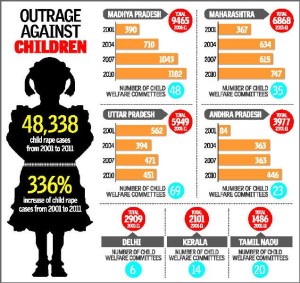 ಅತ್ಯಾಚಾರಕ್ಕೊಳಗಾದ ಮಹಿಳೆಯರು ದೂರು ನೀಡಿದರೂ ನಂತರ ಜೀವ ಬೆದರಿಕೆ ಒತ್ತಡ ತಂತ್ರಕ್ಕೆ ಸಿಲುಕಿ ಕೇಸು ಹಿಂಪಡೆಯುವುದು ನಡೆಯುತ್ತಿದೆ. ಹಣ ಜಾತಿ ಧರ್ಮ ರಾಜಕೀಯ ಪ್ರಭುತ್ವದ ಒತ್ತಡಗಳೂ ಬಹಳಷ್ಟು ಅತ್ಯಾಚಾರ ಪ್ರಕರಣಗಳನ್ನು ಮುಚ್ಚಿ ಹಾಕಿಬಿಡುತ್ತದೆ. ಕೆಲವು ಪ್ರಕರಣಗಳಲ್ಲಿ ಸಾಕ್ಷಿದಾರರಿಂದ ಸುಳ್ಳು ಹೇಳಿಕೆ ಕೊಡಿಸುವುದರಿಂದಲೂ ಆರೋಪಿಗಳು ಶಿಕ್ಷೆಯಿಂದ ತಪ್ಪಿಸಿಕೊಳ್ಳುತ್ತಿದ್ದಾರೆ. ರಾಜ್ಯದಲ್ಲಿ ಕಳೆದ ಮೂರು ವರ್ಷಗಳಲ್ಲಿ ಮಹಿಳೆಯ ಮೇಲೆ ನಡೆದ ದೌರ್ಜನ್ಯಕ್ಕೆ ಸಂಬಂಧಿಸಿದಂತೆ 31915 ಪ್ರಕರಣಗಳು ದಾಖಲಾಗಿವೆ! ಈ ಪ್ರಮಾಣದ ಪ್ರಕರಣಗಳ ದಾಖಲು ನಮ್ಮ ಮಹಿಳೆಯರಿಗಿರುವ ಸುರಕ್ಷತೆಯ ಮಾನದಂಡಗಳಾಗಿ ನಮಗೆ ಕಾಣುತ್ತವೆ. ಅತ್ಯಾಚಾರಕ್ಕೊಳಗಾದ ಅಪ್ರಾಪ್ತ ಬಾಲಕಿಯರು, ಮಹಿಳೆಯರು ಆತ್ಮಹತ್ಯೆ ಮಾಡಿಕೊಳ್ಳುವಂಥಹ, ಆತ್ಮಾಘಾತಕ್ಕೆ ಒಳಗಾಗಿ ಜೀವನ ಪೂರ್ತಿ ನರಳುವಂತಹ, ಸಮಾಜದ ಕಾಕದೃಷ್ಟಿಯಿಂದ ಚಿತ್ರಹಿಂಸೆ ಅನುಭವಿಸುವಂತಹ ಸ್ಥಿತಿಯನ್ನು ನಮ್ಮ ಕಣ್ಣೆದುರಿಗೇ ನೋಡುತ್ತಿರುವಾಗ ಮಹಿಳೆಗೆ ತನ್ನ ದೇಹದ ಮೇಲಿನ ಹಕ್ಕೇ ಇಲ್ಲದಿರುವಾಗ ಘನತೆಯ ಬದುಕಿನ ಕಲ್ಪನೆ, ಅಭಿವೃದ್ಧಿ ಸಾಧ್ಯವೇ? ಎಂಬ ಉತ್ತರವಿಲ್ಲದ ಪ್ರಶ್ನೆ ಕಂಗೆಡಿಸುತ್ತದೆ.
ಅತ್ಯಾಚಾರಕ್ಕೊಳಗಾದ ಮಹಿಳೆಯರು ದೂರು ನೀಡಿದರೂ ನಂತರ ಜೀವ ಬೆದರಿಕೆ ಒತ್ತಡ ತಂತ್ರಕ್ಕೆ ಸಿಲುಕಿ ಕೇಸು ಹಿಂಪಡೆಯುವುದು ನಡೆಯುತ್ತಿದೆ. ಹಣ ಜಾತಿ ಧರ್ಮ ರಾಜಕೀಯ ಪ್ರಭುತ್ವದ ಒತ್ತಡಗಳೂ ಬಹಳಷ್ಟು ಅತ್ಯಾಚಾರ ಪ್ರಕರಣಗಳನ್ನು ಮುಚ್ಚಿ ಹಾಕಿಬಿಡುತ್ತದೆ. ಕೆಲವು ಪ್ರಕರಣಗಳಲ್ಲಿ ಸಾಕ್ಷಿದಾರರಿಂದ ಸುಳ್ಳು ಹೇಳಿಕೆ ಕೊಡಿಸುವುದರಿಂದಲೂ ಆರೋಪಿಗಳು ಶಿಕ್ಷೆಯಿಂದ ತಪ್ಪಿಸಿಕೊಳ್ಳುತ್ತಿದ್ದಾರೆ. ರಾಜ್ಯದಲ್ಲಿ ಕಳೆದ ಮೂರು ವರ್ಷಗಳಲ್ಲಿ ಮಹಿಳೆಯ ಮೇಲೆ ನಡೆದ ದೌರ್ಜನ್ಯಕ್ಕೆ ಸಂಬಂಧಿಸಿದಂತೆ 31915 ಪ್ರಕರಣಗಳು ದಾಖಲಾಗಿವೆ! ಈ ಪ್ರಮಾಣದ ಪ್ರಕರಣಗಳ ದಾಖಲು ನಮ್ಮ ಮಹಿಳೆಯರಿಗಿರುವ ಸುರಕ್ಷತೆಯ ಮಾನದಂಡಗಳಾಗಿ ನಮಗೆ ಕಾಣುತ್ತವೆ. ಅತ್ಯಾಚಾರಕ್ಕೊಳಗಾದ ಅಪ್ರಾಪ್ತ ಬಾಲಕಿಯರು, ಮಹಿಳೆಯರು ಆತ್ಮಹತ್ಯೆ ಮಾಡಿಕೊಳ್ಳುವಂಥಹ, ಆತ್ಮಾಘಾತಕ್ಕೆ ಒಳಗಾಗಿ ಜೀವನ ಪೂರ್ತಿ ನರಳುವಂತಹ, ಸಮಾಜದ ಕಾಕದೃಷ್ಟಿಯಿಂದ ಚಿತ್ರಹಿಂಸೆ ಅನುಭವಿಸುವಂತಹ ಸ್ಥಿತಿಯನ್ನು ನಮ್ಮ ಕಣ್ಣೆದುರಿಗೇ ನೋಡುತ್ತಿರುವಾಗ ಮಹಿಳೆಗೆ ತನ್ನ ದೇಹದ ಮೇಲಿನ ಹಕ್ಕೇ ಇಲ್ಲದಿರುವಾಗ ಘನತೆಯ ಬದುಕಿನ ಕಲ್ಪನೆ, ಅಭಿವೃದ್ಧಿ ಸಾಧ್ಯವೇ? ಎಂಬ ಉತ್ತರವಿಲ್ಲದ ಪ್ರಶ್ನೆ ಕಂಗೆಡಿಸುತ್ತದೆ. ಟ್ರಾಕ್ ಕೋರ್ಟ್ ಗಳನ್ನು ಸ್ಥಾಪಿಸಿ ಅಪರಾಧಿಗಳಿಗೆ ಕಾನೂನುರೀತ್ಯ ಶಿಕ್ಷೆ ನೀಡುವಂತಾಗಬೇಕಿದೆ. ಮಹಿಳೆಯರ ಮೇಲಿನ ಅಪರಾಧಗಳನ್ನು ತಡೆಗಟ್ಟಲು ಅಸ್ತಿತ್ವದಲ್ಲಿರುವ ಕಾನೂನುಗಳನ್ನು ಯಾವುದೇ ಕುಂದಿಲ್ಲದೇ ಜಾರಿಗೊಳಿಸುವ ಕೆಲಸವಾಗಬೇಕು. ಹೆಣ್ಣುಮಕ್ಕಳ ಮೇಲಿನ ಲೈಂಗಿಕ ದೌರ್ಜನ್ಯಕ್ಕೆ ಕಾರಣವಾಗಿರುವ ಅಶ್ಲೀಲ ವೆಬ್ಸೈಟ್ ಗಳನ್ನು ಕೂಡಲೇ ನಿರ್ಬಂಧಿಸಬೇಕು. ಅಶ್ಲೀಲ ಸಿನಿಮಾ, ಜಾಹಿರಾತು ಹಾಗೂ ಇತರ ಅಶ್ಲೀಲ ಕಾರ್ಯಕ್ರಮಗಳ ತಡೆಗೆ ಸಂಬಂಧಿಸಿದಂತೆ ಈಗಾಗಲೇ ಇರುವ ನೀತಿ ನಿಯಮಗಳನ್ನು ಇನ್ನಷ್ಟು ಗಟ್ಟಿಗೊಳಿಸಬೇಕು. ಜೊತೆಗೆ ಸೆನ್ಸಾರ್ ಸಮಿತಿ ಯಾವುದೇ ಮುಲಾಜಿಲ್ಲದೇ ಸೂಕ್ತ ನೀತಿಗಳನ್ನು ಅಳವಡಿಸಿಕೊಂಡು ಕಟ್ಟುನಿಟ್ಟಿನ ಕ್ರಮ ಕೈಗೊಳ್ಳಬೇಕು. ಸರ್ವೋಚ್ಛ ನ್ಯಾಯಾಲಯದ ನಿರ್ದೇಶನದಂತೆ ಎಲ್ಲಾ ಸರ್ಕಾರಿ ಮತ್ತು ಖಾಸಗಿ ಸಂಸ್ಥೆಗಳಲ್ಲಿ, ಕಾಲೇಜುಗಳಲ್ಲಿ ಲೈಂಗಿಕ ಕಿರುಕುಳ ವಿರೋಧಿ ಸಮಿತಿಗಳನ್ನು ಸ್ಥಾಪಿಸಬೇಕು.
ಟ್ರಾಕ್ ಕೋರ್ಟ್ ಗಳನ್ನು ಸ್ಥಾಪಿಸಿ ಅಪರಾಧಿಗಳಿಗೆ ಕಾನೂನುರೀತ್ಯ ಶಿಕ್ಷೆ ನೀಡುವಂತಾಗಬೇಕಿದೆ. ಮಹಿಳೆಯರ ಮೇಲಿನ ಅಪರಾಧಗಳನ್ನು ತಡೆಗಟ್ಟಲು ಅಸ್ತಿತ್ವದಲ್ಲಿರುವ ಕಾನೂನುಗಳನ್ನು ಯಾವುದೇ ಕುಂದಿಲ್ಲದೇ ಜಾರಿಗೊಳಿಸುವ ಕೆಲಸವಾಗಬೇಕು. ಹೆಣ್ಣುಮಕ್ಕಳ ಮೇಲಿನ ಲೈಂಗಿಕ ದೌರ್ಜನ್ಯಕ್ಕೆ ಕಾರಣವಾಗಿರುವ ಅಶ್ಲೀಲ ವೆಬ್ಸೈಟ್ ಗಳನ್ನು ಕೂಡಲೇ ನಿರ್ಬಂಧಿಸಬೇಕು. ಅಶ್ಲೀಲ ಸಿನಿಮಾ, ಜಾಹಿರಾತು ಹಾಗೂ ಇತರ ಅಶ್ಲೀಲ ಕಾರ್ಯಕ್ರಮಗಳ ತಡೆಗೆ ಸಂಬಂಧಿಸಿದಂತೆ ಈಗಾಗಲೇ ಇರುವ ನೀತಿ ನಿಯಮಗಳನ್ನು ಇನ್ನಷ್ಟು ಗಟ್ಟಿಗೊಳಿಸಬೇಕು. ಜೊತೆಗೆ ಸೆನ್ಸಾರ್ ಸಮಿತಿ ಯಾವುದೇ ಮುಲಾಜಿಲ್ಲದೇ ಸೂಕ್ತ ನೀತಿಗಳನ್ನು ಅಳವಡಿಸಿಕೊಂಡು ಕಟ್ಟುನಿಟ್ಟಿನ ಕ್ರಮ ಕೈಗೊಳ್ಳಬೇಕು. ಸರ್ವೋಚ್ಛ ನ್ಯಾಯಾಲಯದ ನಿರ್ದೇಶನದಂತೆ ಎಲ್ಲಾ ಸರ್ಕಾರಿ ಮತ್ತು ಖಾಸಗಿ ಸಂಸ್ಥೆಗಳಲ್ಲಿ, ಕಾಲೇಜುಗಳಲ್ಲಿ ಲೈಂಗಿಕ ಕಿರುಕುಳ ವಿರೋಧಿ ಸಮಿತಿಗಳನ್ನು ಸ್ಥಾಪಿಸಬೇಕು.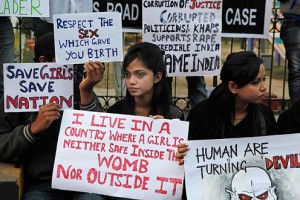 ನ್ಯಾಯಾಲಯದ ಮೆಟ್ಟಿಲೇರಿದಾಗ ವಕೀಲರು ಹಾಕುವ ಸವಾಲು, ನ್ಯಾಯಾಧೀಶರು ಕೇಳುವ ಪ್ರಶ್ನೆಗಳಿಗೆ ಎಷ್ಟೋ ಬಾರಿ ಉತ್ತರಿಸಲು ಸಾಧ್ಯವಾಗದೇ, ಪುರುಷ ನ್ಯಾಯಾಧೀಶರ ಮುಂದೆ ತಾನು ಅನುಭವಿಸಿದ ಹಿಂಸೆಯನ್ನು ಹೇಳಿಕೊಳ್ಳಲಾಗದೇ ಅತ್ಯಾಚಾರಕ್ಕೊಳಗಾದ ಮಹಿಳೆಯರ ಬಹಳಷ್ಟು ಕೇಸುಗಳು ಬಿದ್ದುಹೋಗುತ್ತವೆ. ಇದೇ ಕಾರಣಕ್ಕೆ ಸಿ ಆರ್ ಪಿ ಸಿ ಯ 21ನೇ ಕಲಮಿಗೆ ತಿದ್ದುಪಡಿ ಮಾಡಲಾಗಿದೆ. ಸಾಧ್ಯವಾದಷ್ಟು ಮಟ್ಟಿಗೆ ಅತ್ಯಾಚಾರ ಪ್ರಕರಣಗಳನ್ನು ಮಹಿಳಾ ನ್ಯಾಯಾಧೀಶರೇ ವಿಚಾರಣೆ ನಡೆಸಬೇಕು ಎನ್ನುತ್ತದೆ ಈ ತಿದ್ದುಪಡಿ. ಇವೆಲ್ಲವೂ ಮಹಿಳೆಯ ದೇಹ ಮತ್ತು ಅವಳ ವ್ಯಕ್ತಿತ್ವದ ಘನತೆಯ ದೃಷ್ಟಿಯಿಂದ ಸ್ವಾಗತಾರ್ಹವಾದುವೇ ಆಗಿವೆ. ಜೊತೆಗೇ ಅತ್ಯಾಚಾರ ಪ್ರಕರಣಗಳನ್ನು ನಡೆಸುವ ವಕೀಲರೂ ಕೂಡ ಮಹಿಳೆಯರೇ ಆಗಿದ್ದರೆ ಇನ್ನಷ್ಟು ಅನುಕೂಲವಾಗುವ ಸಾಧ್ಯತೆಗಳಿರುತ್ತದೆ. ಇಲಾಖೆಗಳ ನಡುವಿನ ಸಮನ್ವಯದ ಕೊರತೆಯಿಂದಾಗಿಯೇ ಅನೇಕ ಅತ್ಯಾಚಾರದ ಪ್ರಕರಣಗಳು ಮುಚ್ಚಿ ಹೋಗುವುದರಿಂದ ಅದಕ್ಕೆ ಸ್ಪಷ್ಟ ಮಾರ್ಗದರ್ಶನ ಸೂತ್ರಗಳನ್ನು ಸರ್ಕಾರ ತಕ್ಷಣವೇ ಜಾರಿಗೊಳಿಸಬೇಕಿದೆ. ಅದರ ಕೆಲ ಮುಖ್ಯ ಟಿಪ್ಪಣಿಗಳು ಈ ರೀತಿಯಾಗಿವೆ.
ನ್ಯಾಯಾಲಯದ ಮೆಟ್ಟಿಲೇರಿದಾಗ ವಕೀಲರು ಹಾಕುವ ಸವಾಲು, ನ್ಯಾಯಾಧೀಶರು ಕೇಳುವ ಪ್ರಶ್ನೆಗಳಿಗೆ ಎಷ್ಟೋ ಬಾರಿ ಉತ್ತರಿಸಲು ಸಾಧ್ಯವಾಗದೇ, ಪುರುಷ ನ್ಯಾಯಾಧೀಶರ ಮುಂದೆ ತಾನು ಅನುಭವಿಸಿದ ಹಿಂಸೆಯನ್ನು ಹೇಳಿಕೊಳ್ಳಲಾಗದೇ ಅತ್ಯಾಚಾರಕ್ಕೊಳಗಾದ ಮಹಿಳೆಯರ ಬಹಳಷ್ಟು ಕೇಸುಗಳು ಬಿದ್ದುಹೋಗುತ್ತವೆ. ಇದೇ ಕಾರಣಕ್ಕೆ ಸಿ ಆರ್ ಪಿ ಸಿ ಯ 21ನೇ ಕಲಮಿಗೆ ತಿದ್ದುಪಡಿ ಮಾಡಲಾಗಿದೆ. ಸಾಧ್ಯವಾದಷ್ಟು ಮಟ್ಟಿಗೆ ಅತ್ಯಾಚಾರ ಪ್ರಕರಣಗಳನ್ನು ಮಹಿಳಾ ನ್ಯಾಯಾಧೀಶರೇ ವಿಚಾರಣೆ ನಡೆಸಬೇಕು ಎನ್ನುತ್ತದೆ ಈ ತಿದ್ದುಪಡಿ. ಇವೆಲ್ಲವೂ ಮಹಿಳೆಯ ದೇಹ ಮತ್ತು ಅವಳ ವ್ಯಕ್ತಿತ್ವದ ಘನತೆಯ ದೃಷ್ಟಿಯಿಂದ ಸ್ವಾಗತಾರ್ಹವಾದುವೇ ಆಗಿವೆ. ಜೊತೆಗೇ ಅತ್ಯಾಚಾರ ಪ್ರಕರಣಗಳನ್ನು ನಡೆಸುವ ವಕೀಲರೂ ಕೂಡ ಮಹಿಳೆಯರೇ ಆಗಿದ್ದರೆ ಇನ್ನಷ್ಟು ಅನುಕೂಲವಾಗುವ ಸಾಧ್ಯತೆಗಳಿರುತ್ತದೆ. ಇಲಾಖೆಗಳ ನಡುವಿನ ಸಮನ್ವಯದ ಕೊರತೆಯಿಂದಾಗಿಯೇ ಅನೇಕ ಅತ್ಯಾಚಾರದ ಪ್ರಕರಣಗಳು ಮುಚ್ಚಿ ಹೋಗುವುದರಿಂದ ಅದಕ್ಕೆ ಸ್ಪಷ್ಟ ಮಾರ್ಗದರ್ಶನ ಸೂತ್ರಗಳನ್ನು ಸರ್ಕಾರ ತಕ್ಷಣವೇ ಜಾರಿಗೊಳಿಸಬೇಕಿದೆ. ಅದರ ಕೆಲ ಮುಖ್ಯ ಟಿಪ್ಪಣಿಗಳು ಈ ರೀತಿಯಾಗಿವೆ. ತುರ್ತಾಗಿ ಮಹಿಳಾ ಮತ್ತು ಮಕ್ಕಳ ಇಲಾಖೆಯಿಂದ ಆಗಬೇಕು. ನಿಯಮಿತವಾಗಿ ನಿಗಾ ಇಡುವ, ವರ್ಷಕ್ಕೊಮ್ಮೆ ಪುನರ್ ನವೀಕರಿಸುವ ವ್ಯವಸ್ಥೆಯೂ ಆಗಬೇಕು. ನಿಗದಿತ ಅವಧಿಯಲ್ಲಿ ದಾಖಲಾಗದ್ದವನ್ನು ಮಟ್ಟುಗೋಲು ಹಾಕಿಕೊಳ್ಳಬೇಕು. ಅಕ್ರಮ, ಅನೈತಿಕ ಚಟುವಟಿಕೆಗಳು ನಡೆಯುತ್ತಿದ್ದರೆ ತಕ್ಷಣ ಪೊಲೀಸರಲ್ಲಿ ದೂರು ದಾಖಲಿಸಿ ಕ್ರಮ ಕೈಗೊಳ್ಳಬೇಕು.
ತುರ್ತಾಗಿ ಮಹಿಳಾ ಮತ್ತು ಮಕ್ಕಳ ಇಲಾಖೆಯಿಂದ ಆಗಬೇಕು. ನಿಯಮಿತವಾಗಿ ನಿಗಾ ಇಡುವ, ವರ್ಷಕ್ಕೊಮ್ಮೆ ಪುನರ್ ನವೀಕರಿಸುವ ವ್ಯವಸ್ಥೆಯೂ ಆಗಬೇಕು. ನಿಗದಿತ ಅವಧಿಯಲ್ಲಿ ದಾಖಲಾಗದ್ದವನ್ನು ಮಟ್ಟುಗೋಲು ಹಾಕಿಕೊಳ್ಳಬೇಕು. ಅಕ್ರಮ, ಅನೈತಿಕ ಚಟುವಟಿಕೆಗಳು ನಡೆಯುತ್ತಿದ್ದರೆ ತಕ್ಷಣ ಪೊಲೀಸರಲ್ಲಿ ದೂರು ದಾಖಲಿಸಿ ಕ್ರಮ ಕೈಗೊಳ್ಳಬೇಕು.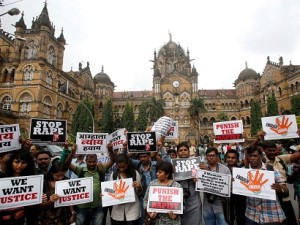 ಬಳಸಿಕೊಳ್ಳುವ ಆತ್ಮವಿಶ್ವಾಸವಿರಬೇಕು. ಅತ್ಯಾಚಾರಕ್ಕೊಳಗಾಗಿ ದೈಹಿಕ-ಮಾನಸಿಕ ಆಘಾತಕ್ಕೀಡಾದರೂ ಆತ್ಮಹತ್ಯೆಯಂತಾ ಕ್ಷುದ್ರ ತೀರ್ಮಾನವನ್ನು ಎಂದಿಗೂ ತೆಗೆದುಕೊಳ್ಳದೇ ದಿಟ್ಟತನದಿಂದ ಬದುಕನ್ನು ಎದುರಿಸಲು ಆ ಹೆಣ್ಣುಮಕ್ಕಳನ್ನು ತಯಾರು ಮಾಡುವುದು ಹೇಗೆ ಎನ್ನುವುದು ಇನ್ನೊಂದು ಮುಖ್ಯವಾದ ಸವಾಲು. ಹಾಗೇ ಅಪರಾಧಿಗೆ ಕಠಿಣ ಶಿಕ್ಷೆ ಆದಾಗ ಅಪರಾಧ ಮಾಡುವವರಲ್ಲಿ ಭಯ ಮೂಡುತ್ತದೆ. ಸಮುದಾಯದ ಒಳಿತಿಗಾಗಿ ವೈಯಕ್ತಿಕ ಬದುಕು ಒಂದಿಷ್ಟು ಸಮಾಜದೆದುರು ತೆರೆದುಕೊಂಡರೂ ಸರಿ ಅಪರಾಧಿಗಳಿಗೆ ಶಿಕ್ಷೆ ಕೊಡಿಸುವ ನಿಟ್ಟಿನಲ್ಲಿ ಕೇಸು ದಾಖಲು ಮಾಡಬೇಕು. ನಮ್ಮ ನಿಷ್ಠುರ ಸಮಾಜದ, ಹೆಣ್ಣಿನ ಶೀಲದ ಕುರಿತ ಕಠಿಣ ಪರಿಕಲ್ಪನೆಯನ್ನು ಆಧುನಿಕತೆಗೆ ತಕ್ಕಂತೆ ಸೂಕ್ಷ್ಮವಾಗಿ ಮಾರ್ಪಡಿಸಿಕೊಳ್ಳಬೇಕಿರುವುದು ಇಂದಿನ ತುರ್ತು. ಮದುವೆಯೇ ಅಂತಿಮ ಗುರಿಯೆಂಬ ಭ್ರಮೆಯಿಂದ ನಮ್ಮ ಹೆಣ್ಣುಮಕ್ಕಳನ್ನು ಹೊರತಂದು ಅವರಿಗೆ ತಮ್ಮತನದ ಅರಿವು, ವಿಶಾಲ ಪರಿಧಿಯ ಜಾಗೃತಿ ಮೂಡಿಸಬೇಕಿರುವುದು ಎಲ್ಲಕ್ಕಿಂತ ಮುಖ್ಯವಾದುದು.
ಬಳಸಿಕೊಳ್ಳುವ ಆತ್ಮವಿಶ್ವಾಸವಿರಬೇಕು. ಅತ್ಯಾಚಾರಕ್ಕೊಳಗಾಗಿ ದೈಹಿಕ-ಮಾನಸಿಕ ಆಘಾತಕ್ಕೀಡಾದರೂ ಆತ್ಮಹತ್ಯೆಯಂತಾ ಕ್ಷುದ್ರ ತೀರ್ಮಾನವನ್ನು ಎಂದಿಗೂ ತೆಗೆದುಕೊಳ್ಳದೇ ದಿಟ್ಟತನದಿಂದ ಬದುಕನ್ನು ಎದುರಿಸಲು ಆ ಹೆಣ್ಣುಮಕ್ಕಳನ್ನು ತಯಾರು ಮಾಡುವುದು ಹೇಗೆ ಎನ್ನುವುದು ಇನ್ನೊಂದು ಮುಖ್ಯವಾದ ಸವಾಲು. ಹಾಗೇ ಅಪರಾಧಿಗೆ ಕಠಿಣ ಶಿಕ್ಷೆ ಆದಾಗ ಅಪರಾಧ ಮಾಡುವವರಲ್ಲಿ ಭಯ ಮೂಡುತ್ತದೆ. ಸಮುದಾಯದ ಒಳಿತಿಗಾಗಿ ವೈಯಕ್ತಿಕ ಬದುಕು ಒಂದಿಷ್ಟು ಸಮಾಜದೆದುರು ತೆರೆದುಕೊಂಡರೂ ಸರಿ ಅಪರಾಧಿಗಳಿಗೆ ಶಿಕ್ಷೆ ಕೊಡಿಸುವ ನಿಟ್ಟಿನಲ್ಲಿ ಕೇಸು ದಾಖಲು ಮಾಡಬೇಕು. ನಮ್ಮ ನಿಷ್ಠುರ ಸಮಾಜದ, ಹೆಣ್ಣಿನ ಶೀಲದ ಕುರಿತ ಕಠಿಣ ಪರಿಕಲ್ಪನೆಯನ್ನು ಆಧುನಿಕತೆಗೆ ತಕ್ಕಂತೆ ಸೂಕ್ಷ್ಮವಾಗಿ ಮಾರ್ಪಡಿಸಿಕೊಳ್ಳಬೇಕಿರುವುದು ಇಂದಿನ ತುರ್ತು. ಮದುವೆಯೇ ಅಂತಿಮ ಗುರಿಯೆಂಬ ಭ್ರಮೆಯಿಂದ ನಮ್ಮ ಹೆಣ್ಣುಮಕ್ಕಳನ್ನು ಹೊರತಂದು ಅವರಿಗೆ ತಮ್ಮತನದ ಅರಿವು, ವಿಶಾಲ ಪರಿಧಿಯ ಜಾಗೃತಿ ಮೂಡಿಸಬೇಕಿರುವುದು ಎಲ್ಲಕ್ಕಿಂತ ಮುಖ್ಯವಾದುದು.

 Follow
Follow
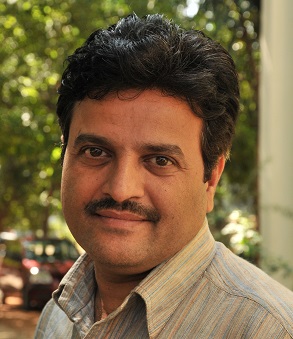
 ಶಾಲೆ-ಕಾಲೇಜುಗಳು ನಮ್ಮ ಕಾಲದಲ್ಲಿದ್ದಂತಿಲ್ಲ ಎಂದು ಹೇಳುವುದನ್ನು ಕೇಳುವಂತೆಯೇ ಮಾಧ್ಯಮಗಳೂ ಈ ಹಿಂದಿನಂತೆ ಇಲ್ಲ ಎಂಬುದು ಕಿವಿಗೆ ಬೀಳುವುದೂ ಅಪರೂಪವಲ್ಲ. ಮಾಧ್ಯಮ ಒಂದು ಉದ್ಯಮದ ಸ್ವರೂಪ ಪಡೆದ ಮೇಲೆ ಹೀಗಾಗಿರಲೂ ಸಾಕು.
ಶಾಲೆ-ಕಾಲೇಜುಗಳು ನಮ್ಮ ಕಾಲದಲ್ಲಿದ್ದಂತಿಲ್ಲ ಎಂದು ಹೇಳುವುದನ್ನು ಕೇಳುವಂತೆಯೇ ಮಾಧ್ಯಮಗಳೂ ಈ ಹಿಂದಿನಂತೆ ಇಲ್ಲ ಎಂಬುದು ಕಿವಿಗೆ ಬೀಳುವುದೂ ಅಪರೂಪವಲ್ಲ. ಮಾಧ್ಯಮ ಒಂದು ಉದ್ಯಮದ ಸ್ವರೂಪ ಪಡೆದ ಮೇಲೆ ಹೀಗಾಗಿರಲೂ ಸಾಕು. ಘಟನೆ ನಡೆಯತೊಡಗಿದ ಮೇಲೆ ವರದಿಗಾರರು ಬಂದರೆ ಯಾರೋ ತಿಳಿಸಿದ ಮೇಲೆ ಬಂದಿದ್ದಾರೆ ಎಂದು ಭಾವಿಸಬಹುದು. ಇಲ್ಲಿ ಹಾಗಾಗುವುದಿಲ್ಲ. ಈಚೆಗೆ ಬೆಂಗಳೂರಿನಲ್ಲಿ ಹೆಣ್ಣೊಬ್ಬಳು ತಾನು ಕೆಲಸ ಬಿಟ್ಟ ಕಚೇರಿಯೊಂದರ ಮಾಲೀಕನ ಮೇಲೆ ಹಲ್ಲೆ ನಡೆಸಿದಳು. ಅವಳು ಆ ಕಚೇರಿಯೊಳಗೆ ಹೋಗುವುದು, ಅವಳೊಂದಿಗೆ ಸಂಘಟನೆಯೊಂದರ ಕಾರ್ಯಕರ್ತರು ನುಗ್ಗುವುದು, ಮಾಲೀಕನನ್ನು ಎಳೆದು ಥಳಿಸುವುದು, ಕೊನೆಗೆ ಹೆಣ್ಣು ಮಗಳು ಚಪ್ಪಲಿಯಲ್ಲಿ ಆತನಿಗೆ ಬಾರಿಸುವುದು ಎಲ್ಲವನ್ನೂ ಆಮೂಲಾಗ್ರವಾಗಿ (ಸಿಸಿ ಕ್ಯಾಮರ ಸೆರೆ ಹಿಡಿದ ಚಿತ್ರವಲ್ಲ) ಚಾನೆಲ್ಲು ಬಿತ್ತರಿಸಿತು. ಮೂರ್ನಾಲ್ಕು ಜನರನ್ನು ಸ್ಟುಡಿಯೋಗೆ ಕರೆಸಿ ಭಾರೀ ಚರ್ಚೆ ನಡೆಸಿತು. ಮಾಲೀಕನೂ ಬಂದ. ಆತ ದೌರ್ಜನ್ಯ ಎಸಗಿದ್ದಾನೆ, ತನ್ನನ್ನು ಕೆಟ್ಟದಾಗಿ ನಡೆಸಿಕೊಂಡಿದ್ದಾನೆ, ಇತ್ಯಾದಿ ಆರೋಪಗಳನ್ನು ಆಕೆ ಮಾಡಿದರೆ, ಆತ ಇವೆಲ್ಲ ಸುಳ್ಳು, ಆಕೆ ತನಗೆ ಬ್ಲ್ಯಾಕ್ ಮೇಲ್ ಮಾಡುತ್ತಿದ್ದಾಳೆ, ವೃಥಾ ಹಣ ಕೀಳುವ ಆಕೆಯ ಪ್ಲಾನ್ ಇದು ಎಂದು ಹೇಳುತ್ತಿದ್ದ.
ಘಟನೆ ನಡೆಯತೊಡಗಿದ ಮೇಲೆ ವರದಿಗಾರರು ಬಂದರೆ ಯಾರೋ ತಿಳಿಸಿದ ಮೇಲೆ ಬಂದಿದ್ದಾರೆ ಎಂದು ಭಾವಿಸಬಹುದು. ಇಲ್ಲಿ ಹಾಗಾಗುವುದಿಲ್ಲ. ಈಚೆಗೆ ಬೆಂಗಳೂರಿನಲ್ಲಿ ಹೆಣ್ಣೊಬ್ಬಳು ತಾನು ಕೆಲಸ ಬಿಟ್ಟ ಕಚೇರಿಯೊಂದರ ಮಾಲೀಕನ ಮೇಲೆ ಹಲ್ಲೆ ನಡೆಸಿದಳು. ಅವಳು ಆ ಕಚೇರಿಯೊಳಗೆ ಹೋಗುವುದು, ಅವಳೊಂದಿಗೆ ಸಂಘಟನೆಯೊಂದರ ಕಾರ್ಯಕರ್ತರು ನುಗ್ಗುವುದು, ಮಾಲೀಕನನ್ನು ಎಳೆದು ಥಳಿಸುವುದು, ಕೊನೆಗೆ ಹೆಣ್ಣು ಮಗಳು ಚಪ್ಪಲಿಯಲ್ಲಿ ಆತನಿಗೆ ಬಾರಿಸುವುದು ಎಲ್ಲವನ್ನೂ ಆಮೂಲಾಗ್ರವಾಗಿ (ಸಿಸಿ ಕ್ಯಾಮರ ಸೆರೆ ಹಿಡಿದ ಚಿತ್ರವಲ್ಲ) ಚಾನೆಲ್ಲು ಬಿತ್ತರಿಸಿತು. ಮೂರ್ನಾಲ್ಕು ಜನರನ್ನು ಸ್ಟುಡಿಯೋಗೆ ಕರೆಸಿ ಭಾರೀ ಚರ್ಚೆ ನಡೆಸಿತು. ಮಾಲೀಕನೂ ಬಂದ. ಆತ ದೌರ್ಜನ್ಯ ಎಸಗಿದ್ದಾನೆ, ತನ್ನನ್ನು ಕೆಟ್ಟದಾಗಿ ನಡೆಸಿಕೊಂಡಿದ್ದಾನೆ, ಇತ್ಯಾದಿ ಆರೋಪಗಳನ್ನು ಆಕೆ ಮಾಡಿದರೆ, ಆತ ಇವೆಲ್ಲ ಸುಳ್ಳು, ಆಕೆ ತನಗೆ ಬ್ಲ್ಯಾಕ್ ಮೇಲ್ ಮಾಡುತ್ತಿದ್ದಾಳೆ, ವೃಥಾ ಹಣ ಕೀಳುವ ಆಕೆಯ ಪ್ಲಾನ್ ಇದು ಎಂದು ಹೇಳುತ್ತಿದ್ದ. ಎಂಬುದನ್ನು ಕೆದಕಿ, ಬೆದಕಿ ಆಡಿಯೋ ವಿಡಿಯೋ (ಅಸಲಿಯೋ ನಕಲಿಯೋ ತಿಳಿಯುವುದು ಆಮೇಲೆ) ಇತ್ಯಾದಿ ಸಿಕ್ಕಿದ ದಾಖಲೆಗಳನ್ನು ಮತ್ತೆ ಮತ್ತೆ ಪ್ರಸಾರ ಮಾಡುತ್ತಿದ್ದರೆ ಕಣ್ಣು ಬಾಯಿ ಬಿಟ್ಟುಕೊಂಡು ನೋಡುವ, ತಮ್ಮ ನೂರು ಸಮಸ್ಯೆಗಳನ್ನು ಬದಿಗಿಟ್ಟು ಅದರ ಬಗ್ಗೆ ಹರಟುವ ಜನರ ಸಂಖ್ಯೆಯೇನೂ ಕಡಿಮೆ ಇಲ್ಲ. ಚಾನೆಲ್ಲಿಗೆ ಬೇಕಾದುದು ಇಂಥವರೇ. ಇಂಥವರ ಸಂಖ್ಯೆ ಹೆಚ್ಚಿದಷ್ಟೂ ಅದರ ಟಿಆರ್ಪಿ ಹೆಚ್ಚುತ್ತದೆ! ಈ ಬಗೆಯ ಸಂಗತಿಗಳಲ್ಲಿ ಬಹುಪಾಲು ಜನರಿಗೆ ಇರುವ ಕೆಟ್ಟ ಕುತೂಹಲವನ್ನು ಚಾನೆಲ್ಲುಗಳು ಹಣವನ್ನಾಗಿ ಪರಿವರ್ತಿಸಿಕೊಳ್ಳುತ್ತವೆ.
ಎಂಬುದನ್ನು ಕೆದಕಿ, ಬೆದಕಿ ಆಡಿಯೋ ವಿಡಿಯೋ (ಅಸಲಿಯೋ ನಕಲಿಯೋ ತಿಳಿಯುವುದು ಆಮೇಲೆ) ಇತ್ಯಾದಿ ಸಿಕ್ಕಿದ ದಾಖಲೆಗಳನ್ನು ಮತ್ತೆ ಮತ್ತೆ ಪ್ರಸಾರ ಮಾಡುತ್ತಿದ್ದರೆ ಕಣ್ಣು ಬಾಯಿ ಬಿಟ್ಟುಕೊಂಡು ನೋಡುವ, ತಮ್ಮ ನೂರು ಸಮಸ್ಯೆಗಳನ್ನು ಬದಿಗಿಟ್ಟು ಅದರ ಬಗ್ಗೆ ಹರಟುವ ಜನರ ಸಂಖ್ಯೆಯೇನೂ ಕಡಿಮೆ ಇಲ್ಲ. ಚಾನೆಲ್ಲಿಗೆ ಬೇಕಾದುದು ಇಂಥವರೇ. ಇಂಥವರ ಸಂಖ್ಯೆ ಹೆಚ್ಚಿದಷ್ಟೂ ಅದರ ಟಿಆರ್ಪಿ ಹೆಚ್ಚುತ್ತದೆ! ಈ ಬಗೆಯ ಸಂಗತಿಗಳಲ್ಲಿ ಬಹುಪಾಲು ಜನರಿಗೆ ಇರುವ ಕೆಟ್ಟ ಕುತೂಹಲವನ್ನು ಚಾನೆಲ್ಲುಗಳು ಹಣವನ್ನಾಗಿ ಪರಿವರ್ತಿಸಿಕೊಳ್ಳುತ್ತವೆ. ಮರಳು ಮಾಡುವುದು ಕಷ್ಟವೇನೂ ಅಲ್ಲ. ಆದರೆ ಇವೆಲ್ಲ ಸದಾ ಕಾಲ ನಡೆಯುವುದಿಲ್ಲ. ಪತ್ರಿಕೆ ಓದುವವರು ಅಥವಾ ಟಿವಿ ವೀಕ್ಷಕರು ಓದು ಬರಹ ಗೊತ್ತಿರುವವರೇ. ಆದರೆ ಇವೆಲ್ಲ ಓದುಗರ ಗಮನಕ್ಕೆ ಬರುವಷ್ಟರಲ್ಲಿ ಸ್ವಾರ್ಥಿಗಳ ಬೇಳೆ ಬೆಂದಿರುತ್ತದೆ.
ಮರಳು ಮಾಡುವುದು ಕಷ್ಟವೇನೂ ಅಲ್ಲ. ಆದರೆ ಇವೆಲ್ಲ ಸದಾ ಕಾಲ ನಡೆಯುವುದಿಲ್ಲ. ಪತ್ರಿಕೆ ಓದುವವರು ಅಥವಾ ಟಿವಿ ವೀಕ್ಷಕರು ಓದು ಬರಹ ಗೊತ್ತಿರುವವರೇ. ಆದರೆ ಇವೆಲ್ಲ ಓದುಗರ ಗಮನಕ್ಕೆ ಬರುವಷ್ಟರಲ್ಲಿ ಸ್ವಾರ್ಥಿಗಳ ಬೇಳೆ ಬೆಂದಿರುತ್ತದೆ.
 ಕ್ರಿ.ಶ 1800 ರಲ್ಲಿ ಜಾಗತಿಕ ಜನಸಂಖ್ಯೆ 100 ಕೋಟಿ (ಒಂದು ಬಿಲಿಯನ್) ಇದ್ದದ್ದು 1987 ರ ಹೊತ್ತಿಗೆ 500 ಕೋಟಿ ತಲುಪಿತ್ತು. ಆಗ ಏರುತ್ತಿರುವ ಜನಸಂಖ್ಯೆಯನ್ನು ತಗ್ಗಿಸುವ ಜಾಗೃತಿ ಮೂಡಿಸುವ ಸಲುವಾಗಿ ಅಂದಿನಿಂದ ಜನಸಂಖ್ಯಾ ದಿನಾಚರಣೆಯನ್ನು ಆಚರಿಸಲಾಗುತ್ತಿದೆ. ಇದೀಗ ಜಾಗತಿಕ ಜನಸಂಖ್ಯೆ 700 ಕೋಟಿಯನ್ನು ಮುಟ್ಟಿದೆ. ಯುನೈಟೆಡ್ ಸ್ಟೇಟ್ಸ್ ಸೆನ್ಸಸ್ ಬ್ಯೂರೋ ಪ್ರಕಾರ ಪ್ರತಿ 8 ಸೆಕೆಂಡಿಗೆ ಒಂದು ಮಗುವಿನ ಜನನವಾಗುತ್ತದೆ. ಪ್ರತಿ 12 ಸೆಕೆಂಡಿಗೆ ಒಬ್ಬರ ಸಾವಾಗುತ್ತದೆ. ಒಟ್ಟಾರೆ ಪ್ರತಿ 14 ಸೆಕೆಂಡಿಗೆ ಒಂದು ಮಗು ಭೂಮಿಗೆ ಪ್ರವೇಶ ಪಡೆಯುತ್ತದೆ.
ಕ್ರಿ.ಶ 1800 ರಲ್ಲಿ ಜಾಗತಿಕ ಜನಸಂಖ್ಯೆ 100 ಕೋಟಿ (ಒಂದು ಬಿಲಿಯನ್) ಇದ್ದದ್ದು 1987 ರ ಹೊತ್ತಿಗೆ 500 ಕೋಟಿ ತಲುಪಿತ್ತು. ಆಗ ಏರುತ್ತಿರುವ ಜನಸಂಖ್ಯೆಯನ್ನು ತಗ್ಗಿಸುವ ಜಾಗೃತಿ ಮೂಡಿಸುವ ಸಲುವಾಗಿ ಅಂದಿನಿಂದ ಜನಸಂಖ್ಯಾ ದಿನಾಚರಣೆಯನ್ನು ಆಚರಿಸಲಾಗುತ್ತಿದೆ. ಇದೀಗ ಜಾಗತಿಕ ಜನಸಂಖ್ಯೆ 700 ಕೋಟಿಯನ್ನು ಮುಟ್ಟಿದೆ. ಯುನೈಟೆಡ್ ಸ್ಟೇಟ್ಸ್ ಸೆನ್ಸಸ್ ಬ್ಯೂರೋ ಪ್ರಕಾರ ಪ್ರತಿ 8 ಸೆಕೆಂಡಿಗೆ ಒಂದು ಮಗುವಿನ ಜನನವಾಗುತ್ತದೆ. ಪ್ರತಿ 12 ಸೆಕೆಂಡಿಗೆ ಒಬ್ಬರ ಸಾವಾಗುತ್ತದೆ. ಒಟ್ಟಾರೆ ಪ್ರತಿ 14 ಸೆಕೆಂಡಿಗೆ ಒಂದು ಮಗು ಭೂಮಿಗೆ ಪ್ರವೇಶ ಪಡೆಯುತ್ತದೆ. ಹೆಚ್ಚಾಗುತ್ತಿದೆ. ಶ್ರೀಮಂತ ವರ್ಗಕ್ಕೆ ಹೆಚ್ಚುತ್ತಿರುವ ಜನಸಂಖ್ಯೆಯೆ ಬಂಡವಾಳವಾಗಿಯೂ, ಗಿರಾಕಿಗಳಾಗಿಯೂ ಪರಿವರ್ತಿತವಾಗುತ್ತಿರುವುದು ವಿಪರ್ಯಾಸವಾಗಿದೆ.
ಹೆಚ್ಚಾಗುತ್ತಿದೆ. ಶ್ರೀಮಂತ ವರ್ಗಕ್ಕೆ ಹೆಚ್ಚುತ್ತಿರುವ ಜನಸಂಖ್ಯೆಯೆ ಬಂಡವಾಳವಾಗಿಯೂ, ಗಿರಾಕಿಗಳಾಗಿಯೂ ಪರಿವರ್ತಿತವಾಗುತ್ತಿರುವುದು ವಿಪರ್ಯಾಸವಾಗಿದೆ. ಹೆಚ್ಚಿನ ಜನಸಂಖ್ಯೆಯಿಂದಾಗಿ ಆಯಾ ದೇಶಗಳು ಮೂಲಭೂತ ಸೌಕರ್ಯಗಳನ್ನು ಒದಗಿಸುವಲ್ಲಿ ಹಿಂದೆ ಬೀಳುತ್ತಿವೆ. ಜಾಗತಿಕ ಸಮಸ್ಯೆಗಳು ಆಂತರಿಕವಾಗಿ ಜನಸಂಖ್ಯೆಯ ಹೆಚ್ಚಳದೊಂದಿಗೆ ತಳಕುಹಾಕಿಕೊಂಡಿವೆ. ಜನವಸತಿ ಪ್ರದೇಶ ಹೆಚ್ಚುತ್ತಿರುವುದರಿಂದ ಕಾಡು ಮರಗಿಡಗಳ ಪ್ರಮಾಣ ದಿನದಿಂದ ದಿನಕ್ಕೆ ಕಡಿಮೆಯಾಗುತ್ತಿದೆ. ಕೃಷಿ ಆಧಾರಿತ ಆರ್ಥಿಕತೆ ಕೈಗಾರಿಕಾ ವಲಯ ಆಧಾರಿತ ಆರ್ಥಿಕತೆಯಾಗಿ ಬದಲಾಗಿದೆ. ಇದರಿಂದಾಗಿ ಜಾಗತಿಕ ತಾಪಮಾನ ಹೆಚ್ಚಳಕ್ಕೂ, ಜನಸಂಖ್ಯಾ ಹೆಚ್ಚಳಕ್ಕೂ ಸಂಬಂಧವಿದೆ. ಹೀಗೆ ಪ್ರತಿಯೊಂದು ಜಾಗತಿಕ ಸಮಸ್ಯೆಗಳ ಹಿಂದೆಯೂ ಹೆಚ್ಚುತ್ತಿರುವ ಜನಸಂಖ್ಯೆಯ ನೆರಳು ಕಾಣುತ್ತಿದೆ.
ಹೆಚ್ಚಿನ ಜನಸಂಖ್ಯೆಯಿಂದಾಗಿ ಆಯಾ ದೇಶಗಳು ಮೂಲಭೂತ ಸೌಕರ್ಯಗಳನ್ನು ಒದಗಿಸುವಲ್ಲಿ ಹಿಂದೆ ಬೀಳುತ್ತಿವೆ. ಜಾಗತಿಕ ಸಮಸ್ಯೆಗಳು ಆಂತರಿಕವಾಗಿ ಜನಸಂಖ್ಯೆಯ ಹೆಚ್ಚಳದೊಂದಿಗೆ ತಳಕುಹಾಕಿಕೊಂಡಿವೆ. ಜನವಸತಿ ಪ್ರದೇಶ ಹೆಚ್ಚುತ್ತಿರುವುದರಿಂದ ಕಾಡು ಮರಗಿಡಗಳ ಪ್ರಮಾಣ ದಿನದಿಂದ ದಿನಕ್ಕೆ ಕಡಿಮೆಯಾಗುತ್ತಿದೆ. ಕೃಷಿ ಆಧಾರಿತ ಆರ್ಥಿಕತೆ ಕೈಗಾರಿಕಾ ವಲಯ ಆಧಾರಿತ ಆರ್ಥಿಕತೆಯಾಗಿ ಬದಲಾಗಿದೆ. ಇದರಿಂದಾಗಿ ಜಾಗತಿಕ ತಾಪಮಾನ ಹೆಚ್ಚಳಕ್ಕೂ, ಜನಸಂಖ್ಯಾ ಹೆಚ್ಚಳಕ್ಕೂ ಸಂಬಂಧವಿದೆ. ಹೀಗೆ ಪ್ರತಿಯೊಂದು ಜಾಗತಿಕ ಸಮಸ್ಯೆಗಳ ಹಿಂದೆಯೂ ಹೆಚ್ಚುತ್ತಿರುವ ಜನಸಂಖ್ಯೆಯ ನೆರಳು ಕಾಣುತ್ತಿದೆ. ಪ್ರಪಂಚದ ಆರನೇ ಒಂದು ಭಾಗಕ್ಕಿಂತ ಹೆಚ್ಚು ಜನರು ಈ ದೇಶದಲ್ಲಿದ್ದಾರೆ. ಜಾಗತಿಕ ಜನಸಂಖ್ಯೆಯಲ್ಲಿ ಶೇ 17.4 ರಷ್ಟು ಪಾಲು ಭಾರತದ್ದು. ಸುಮಾರು ಎರಡು ಸಾವಿರ ಬುಡಕಟ್ಟುಗಳ ಮೂಲದ ಜನರಿರುವ ಇಲ್ಲಿ ಪ್ರಪಂಚದ ಎಲ್ಲಾ ಪ್ರಮುಖ ಧರ್ಮಗಳನ್ನು ಪಾಲಿಸುವವರಿದ್ದಾರೆ. ಪ್ರಪಂಚದ ಮುಖ್ಯ ಭಾಷಾ ಕುಟುಂಬಗಳಲ್ಲಿನ ನಾಲ್ಕು ಕುಟುಂಬಗಳ ಭಾಷೆಗಳನ್ನು ಇಲ್ಲಿ ಮಾತನಾಡಲಾಗುತ್ತದೆ. ಇವು ಇಂಡೋ-ಯುರೋಪಿಯನ್ ಭಾಷೆಗಳು, ದ್ರಾವಿಡ ಭಾಷೆಗಳು, ಆಸ್ಟ್ರೊ-ಏಷ್ಯಾಟಿಕ್ ಭಾಷೆಗಳು ಮತ್ತು ಟಿಬೆಟೊ-ಬರ್ಮನ್ ಭಾಷೆಗಳು. ಆಫ್ರಿಕಾ ಖಂಡದಲ್ಲಿ ಮಾತ್ರ ಇದಕ್ಕಿಂತ ಹೆಚ್ಚು ಭಾಷೆ, ಸಂಸ್ಕೃತಿ ಮತ್ತು ವಂಶವಾಹಿಗಳ ವೈವಿಧ್ಯತೆ ಇದೆ.
ಪ್ರಪಂಚದ ಆರನೇ ಒಂದು ಭಾಗಕ್ಕಿಂತ ಹೆಚ್ಚು ಜನರು ಈ ದೇಶದಲ್ಲಿದ್ದಾರೆ. ಜಾಗತಿಕ ಜನಸಂಖ್ಯೆಯಲ್ಲಿ ಶೇ 17.4 ರಷ್ಟು ಪಾಲು ಭಾರತದ್ದು. ಸುಮಾರು ಎರಡು ಸಾವಿರ ಬುಡಕಟ್ಟುಗಳ ಮೂಲದ ಜನರಿರುವ ಇಲ್ಲಿ ಪ್ರಪಂಚದ ಎಲ್ಲಾ ಪ್ರಮುಖ ಧರ್ಮಗಳನ್ನು ಪಾಲಿಸುವವರಿದ್ದಾರೆ. ಪ್ರಪಂಚದ ಮುಖ್ಯ ಭಾಷಾ ಕುಟುಂಬಗಳಲ್ಲಿನ ನಾಲ್ಕು ಕುಟುಂಬಗಳ ಭಾಷೆಗಳನ್ನು ಇಲ್ಲಿ ಮಾತನಾಡಲಾಗುತ್ತದೆ. ಇವು ಇಂಡೋ-ಯುರೋಪಿಯನ್ ಭಾಷೆಗಳು, ದ್ರಾವಿಡ ಭಾಷೆಗಳು, ಆಸ್ಟ್ರೊ-ಏಷ್ಯಾಟಿಕ್ ಭಾಷೆಗಳು ಮತ್ತು ಟಿಬೆಟೊ-ಬರ್ಮನ್ ಭಾಷೆಗಳು. ಆಫ್ರಿಕಾ ಖಂಡದಲ್ಲಿ ಮಾತ್ರ ಇದಕ್ಕಿಂತ ಹೆಚ್ಚು ಭಾಷೆ, ಸಂಸ್ಕೃತಿ ಮತ್ತು ವಂಶವಾಹಿಗಳ ವೈವಿಧ್ಯತೆ ಇದೆ. ಗುಲ್ಬರ್ಗ ಜಿಲ್ಲೆಯಲ್ಲಿ ಅತಿ ಹೆಚ್ಚು, ಉಡುಪಿ, ದಕ್ಷಿಣ ಕನ್ನಡ ಹಾಗೂ ಉತ್ತರ ಕನ್ನಡ ಜಿಲ್ಲೆಗಳಲ್ಲಿ ಕಡಿಮೆ ಸಂಖ್ಯೆಯಲ್ಲಿದ್ದಾರೆ. ಪರಿಶಿಷ್ಟ ಪಂಗಡದವರು 42,48,987 ಮಂದಿ ಇದ್ದು, ಶೇ. 22.66 ವೃದ್ಧಿಯಾಗಿದೆ. ಈ ವರ್ಗದ ಜನರು ರಾಯಚೂರು, ಬಳ್ಳಾರಿ, ಚಿತ್ರದುರ್ಗ ಜಿಲ್ಲೆಗಳಲ್ಲಿ ಹೆಚ್ಚು ಸಂಖ್ಯೆಯಲ್ಲಿದ್ದು, ಮಂಡ್ಯ, ವಿಜಾಪುರ ಹಾಗೂ ಹಾಸನ ಜಿಲ್ಲೆಗಳಲ್ಲಿ ಕಡಿಮೆ ಇದ್ದಾರೆ.
ಗುಲ್ಬರ್ಗ ಜಿಲ್ಲೆಯಲ್ಲಿ ಅತಿ ಹೆಚ್ಚು, ಉಡುಪಿ, ದಕ್ಷಿಣ ಕನ್ನಡ ಹಾಗೂ ಉತ್ತರ ಕನ್ನಡ ಜಿಲ್ಲೆಗಳಲ್ಲಿ ಕಡಿಮೆ ಸಂಖ್ಯೆಯಲ್ಲಿದ್ದಾರೆ. ಪರಿಶಿಷ್ಟ ಪಂಗಡದವರು 42,48,987 ಮಂದಿ ಇದ್ದು, ಶೇ. 22.66 ವೃದ್ಧಿಯಾಗಿದೆ. ಈ ವರ್ಗದ ಜನರು ರಾಯಚೂರು, ಬಳ್ಳಾರಿ, ಚಿತ್ರದುರ್ಗ ಜಿಲ್ಲೆಗಳಲ್ಲಿ ಹೆಚ್ಚು ಸಂಖ್ಯೆಯಲ್ಲಿದ್ದು, ಮಂಡ್ಯ, ವಿಜಾಪುರ ಹಾಗೂ ಹಾಸನ ಜಿಲ್ಲೆಗಳಲ್ಲಿ ಕಡಿಮೆ ಇದ್ದಾರೆ. ಶೇ.5.6ಕ್ಕೆ ಕುಸಿದಿದೆ. ಈ ರೀತಿಯ ಕುಸಿತದ ಹಿನ್ನೆಲೆ ಬಗ್ಗೆ ಸರಕಾರ ಗಂಭೀರವಾಗಿ ಯೋಚಿಸಬೇಕಾಗಿದೆ. ಕೃಷಿವಲಯ ಈಗ ಲಾಭದಾಯಕವಾಗಿ ಉಳಿದಿಲ್ಲ. ಕೃಷಿಯಲ್ಲಿ ತೊಡಗಿಸುವ ಬಂಡವಾಳಕ್ಕೆ ತಕ್ಕ ಪ್ರತಿಫಲ ಸಿಗುತ್ತಿಲ್ಲ. ಇದರ ಫಲವಾಗಿ ರೈತ ಸಾಲಗಾರನಾಗುತ್ತಿದ್ದಾನೆ. ರೈತರ ಆತ್ಮಹತ್ಯೆ ಪ್ರಕರಣಗಳು ಈ ಧಾರುಣ ಸಂಗತಿಗೆ ಕನ್ನಡಿ ಹಿಡಿಯುತ್ತಿವೆ.
ಶೇ.5.6ಕ್ಕೆ ಕುಸಿದಿದೆ. ಈ ರೀತಿಯ ಕುಸಿತದ ಹಿನ್ನೆಲೆ ಬಗ್ಗೆ ಸರಕಾರ ಗಂಭೀರವಾಗಿ ಯೋಚಿಸಬೇಕಾಗಿದೆ. ಕೃಷಿವಲಯ ಈಗ ಲಾಭದಾಯಕವಾಗಿ ಉಳಿದಿಲ್ಲ. ಕೃಷಿಯಲ್ಲಿ ತೊಡಗಿಸುವ ಬಂಡವಾಳಕ್ಕೆ ತಕ್ಕ ಪ್ರತಿಫಲ ಸಿಗುತ್ತಿಲ್ಲ. ಇದರ ಫಲವಾಗಿ ರೈತ ಸಾಲಗಾರನಾಗುತ್ತಿದ್ದಾನೆ. ರೈತರ ಆತ್ಮಹತ್ಯೆ ಪ್ರಕರಣಗಳು ಈ ಧಾರುಣ ಸಂಗತಿಗೆ ಕನ್ನಡಿ ಹಿಡಿಯುತ್ತಿವೆ.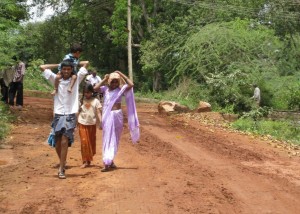 ಹೆಚ್ಚಳದಿಂದಾಗುವ ಅಪಾಯಗಳನ್ನು ಹೊಸ ತಲೆಮಾರಿನ ಪೀಳಿಗೆಯಲ್ಲಿ ಪರಿಣಾಮಕಾರಿಯಾಗಿ ಬಿಂಬಿಸುವ ಯೋಜನೆಗಳು ರೂಪುಗೊಳ್ಳಬೇಕು.
ಹೆಚ್ಚಳದಿಂದಾಗುವ ಅಪಾಯಗಳನ್ನು ಹೊಸ ತಲೆಮಾರಿನ ಪೀಳಿಗೆಯಲ್ಲಿ ಪರಿಣಾಮಕಾರಿಯಾಗಿ ಬಿಂಬಿಸುವ ಯೋಜನೆಗಳು ರೂಪುಗೊಳ್ಳಬೇಕು.
 Narendra Modi, Rahul Gandhi and Arvind Kejriwal ! The options are being presented more as individuals and not as political parties to which they belong. There is not much debate on substantive issues of ideologies or policies and programmes. Discussions seem to center on slogans and catchwords like “ Development”, “ Governance”, “ Corruption”. It is difficult to recall such a draught of ideas and ideology in any electioneering in the past.
Narendra Modi, Rahul Gandhi and Arvind Kejriwal ! The options are being presented more as individuals and not as political parties to which they belong. There is not much debate on substantive issues of ideologies or policies and programmes. Discussions seem to center on slogans and catchwords like “ Development”, “ Governance”, “ Corruption”. It is difficult to recall such a draught of ideas and ideology in any electioneering in the past. so pithily described by GoreVidal: “We have a single party system with two right wings to choose from !” Our governments of different political hues too have followed similar economic policies. They have encouraged the same predatory process of capital accumulation and all it entails including venality and corruption. That has discredited leading functionaries of governments, irrespective of the political parties to which they belong, giving rise to a general disenchantment with the political process which marks this segment of the youth. And above all, there is always the fatal charm of the tendency to lazily simplify everything, even the most complex issues and situations.
so pithily described by GoreVidal: “We have a single party system with two right wings to choose from !” Our governments of different political hues too have followed similar economic policies. They have encouraged the same predatory process of capital accumulation and all it entails including venality and corruption. That has discredited leading functionaries of governments, irrespective of the political parties to which they belong, giving rise to a general disenchantment with the political process which marks this segment of the youth. And above all, there is always the fatal charm of the tendency to lazily simplify everything, even the most complex issues and situations. The more recent and far more phenomenal rise of the Reliance Group is not without government support in one way or the other. It would be interesting to analyse changes in the fiscal and trade policies effected by different governments in the last thirty five years or so and co-relate the growth curve of the Reliance to the changes in those policies. And this notwithstanding the strong and sometimes successful action taken by some politicians and bureaucrats to foil the aggrandizing moves of the Reliance !
The more recent and far more phenomenal rise of the Reliance Group is not without government support in one way or the other. It would be interesting to analyse changes in the fiscal and trade policies effected by different governments in the last thirty five years or so and co-relate the growth curve of the Reliance to the changes in those policies. And this notwithstanding the strong and sometimes successful action taken by some politicians and bureaucrats to foil the aggrandizing moves of the Reliance !
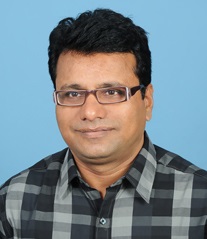
 ಅವನ ಮಾವ ಹರಿಚಂದ ವಾಲ್ಯುಮ್ ಕಡಿಮೆ ಮಾಡಲು ಕೇಳಿಕೊಂಡಾಗಲೂ ಆತ ಕೇಳಲಿಲ್ಲ. ಆಗ ಹರಿಚಂದ ಆ ಹುಡುಗನಿಗೆ ಬಲವಾಗಿ ಹೊಡೆದು ಗೊಡೆಗೆ ಅಪ್ಪಳಿಸಿದ. ಪರಿಣಾಮ ಆ ಅಳಿಯನೆಂಬ ಹುಡುಗ ಮೃತಪಟ್ಟ. ಈ ಬಗೆಯ ಕಾರಣಕ್ಕೆ ಕೊಲೆಗಳು ಜರುಗಬೇಕೆ..? ಎನ್ನುವುದೇ ಇಲ್ಲಿಯ ಮುಖ್ಯ ಪ್ರಶ್ನೆ. ಹಾಗಂತ ಈ ಬಗೆಯ ಘಟನೆ ಇದೇ ಮೊದಲಲ್ಲ.
ಅವನ ಮಾವ ಹರಿಚಂದ ವಾಲ್ಯುಮ್ ಕಡಿಮೆ ಮಾಡಲು ಕೇಳಿಕೊಂಡಾಗಲೂ ಆತ ಕೇಳಲಿಲ್ಲ. ಆಗ ಹರಿಚಂದ ಆ ಹುಡುಗನಿಗೆ ಬಲವಾಗಿ ಹೊಡೆದು ಗೊಡೆಗೆ ಅಪ್ಪಳಿಸಿದ. ಪರಿಣಾಮ ಆ ಅಳಿಯನೆಂಬ ಹುಡುಗ ಮೃತಪಟ್ಟ. ಈ ಬಗೆಯ ಕಾರಣಕ್ಕೆ ಕೊಲೆಗಳು ಜರುಗಬೇಕೆ..? ಎನ್ನುವುದೇ ಇಲ್ಲಿಯ ಮುಖ್ಯ ಪ್ರಶ್ನೆ. ಹಾಗಂತ ಈ ಬಗೆಯ ಘಟನೆ ಇದೇ ಮೊದಲಲ್ಲ. ಇವರಾರು ಮತಿಭ್ರಷ್ಟರು ಅಥವಾ ಹುಚ್ಚರಲ್ಲ. ಆದಾಗ್ಯೂ ಆ ಗಳಿಗೆಯಲ್ಲಿಯ ಮಾನಸಿಕ ಒತ್ತಡಕ್ಕೆ ಸಿಲುಕಿ ಹಾಗೆ ವಿಕ್ಷಿಪ್ತರು ಅನ್ನುವ ಹಾಗೆ ವರ್ತಿಸಿದವರು.
ಇವರಾರು ಮತಿಭ್ರಷ್ಟರು ಅಥವಾ ಹುಚ್ಚರಲ್ಲ. ಆದಾಗ್ಯೂ ಆ ಗಳಿಗೆಯಲ್ಲಿಯ ಮಾನಸಿಕ ಒತ್ತಡಕ್ಕೆ ಸಿಲುಕಿ ಹಾಗೆ ವಿಕ್ಷಿಪ್ತರು ಅನ್ನುವ ಹಾಗೆ ವರ್ತಿಸಿದವರು. ಈ ಲಿಂಡನ್ ಬರ್ಗ್ ಅಧ್ಯಯನ ಮಾಡುವ ಒಂದು ವರ್ಷ ಮೊದಲು ಡಾ ಜಾಪ್ ಪೀನ್ ಎನ್ನುವವರು, ಡಚ್ ಸಂಶೋಧಕರ ನೇತೃತ್ವದಲ್ಲಿ ಒಂದು ಅಧ್ಯಯನ ಕೈಗೊಂಡು ನಗರವಾಸಿಗಳಲ್ಲಿ ಸ್ಕಿಜೋಫ಼್ರೇನಿಯಾ ಪ್ರಮಾಣ ಹೆಚ್ಚಾಗಿರುತ್ತದೆ ಎಂದು ವರದಿ ಮಾಡಿದರು. ನಗರಗವಾಸಿಗಳಲ್ಲಿ ಉದ್ವೇಗ ಮತ್ತು ಮಾನಸಿಕ ಅಸ್ವಸ್ಥತೆ ಹೆಚ್ಚು ಎನ್ನುವುದನ್ನು ಇವರ ಅಧ್ಯಯನ ಬಹಿರಂಗಗೊಳಿಸಿತ್ತು. ಇನ್ನೋರ್ವ ಜರ್ಮನ ಸಂಶೋಧಕ ಡಾ. ಮಜದಾ ಅದ್ಲಿ ಹೇಳುವಂತೆ ‘ನಗರಗಳಲ್ಲಿ ಮನದಟ್ಟಾಗುವ ಅಪಾರ ಜನಜಂಗುಳಿಯ ನಡುವಿನ ಏಕಾಂತತೆ ಅತ್ಯಂತ ಅಪಾಯಕಾರಿಯಾದುದು. ಮನುಷ್ಯನ ಮೆದುಳಿನ ರಚನೆ ನಗರ ಪರಿಸರದಲ್ಲಿ ಸೆಟ್ ಆಗುವಲ್ಲಿ ಸಶಕ್ತವಾಗಿಲ್ಲ’ ಎನ್ನುತ್ತಾರೆ. ಅವರ ಪ್ರಕಾರ ಅಪಾರವಾದ ಸಾಮಾಜಿಕ ಜನಸಂದಣಿ ಮತ್ತು ಅಗಾಧವಾದ ಏಕಾಂತತೆ ಎರಡೂ ಏಕಕಾಲಕ್ಕೆ ಅನುಭವಕ್ಕೆ ಬರುವ ಸಂಗತಿಯೇ ಮೆದುಳಿಗೆ ಹೆಚ್ಚು ಅಪಾಯಕಾರಿ ಎನ್ನುತ್ತಾರೆ. ಲಂಡನ್ ಮತ್ತು ಅಮೆರಿಕೆಯ ಕೆಲವು ಅಧ್ಯಯನಗಳು ಕೂಡಾ ಈ ನಗರ ಬದುಕಿನ ಜಂಜಾಟಗಳನ್ನು ಕುರಿತು ಮಾತನಾಡಿವೆ. ಅಲ್ಲಿಯ ಶಬ್ದ ಮಾಲಿನ್ಯ ಮಕ್ಕಳ ಕಲಿಕೆಯ ಮೇಲೆ ಅದು ಹೇಗೆ ಕೆಟ್ಟ ಪರಿಣಾಮವನ್ನು ಬೀರುತ್ತವೆ ಎನ್ನುವದನ್ನು ಅವರು ತೋರಿಸಿಕೊಟ್ಟಿರುವದಿದೆ. ಸದಾ ಗಿಜಿಬಿಜಿ ಎನುವ ಪರಿಸರದ ನಡುವೆ ನಮ್ಮನ್ನು ಕಾಡುವ ಏಕಾಂತತೆ ನಮ್ಮ ಮೆದುಳಿನ ಮೇಲೆ ಮಾರಕ ಪರಿಣಾಮಗಳನ್ನು ಬೀರುತ್ತದೆ ಎನ್ನುವುದು ಅನೇಕ ಅಧ್ಯಯನಗಳಿಂದ ಸಾಬೀತಾಗಿದೆ. ನಿಸರ್ಗದೆಡೆಗೆ ಮುಖ ಮಾಡುವ, ಬೆರೆಯುವ ಮೂಲಕ ತಕ್ಕ ಮಟ್ಟಿಗೆ ನಮ್ಮ ಮನಸನ್ನು ಆಹ್ಲಾದಕಾರಿಯಾಗಿ ಇಟ್ಟುಕೊಳ್ಳಬಹುದು ಇಲ್ಲದಿದ್ದರೆ ಭವಿಷ್ಯದಲ್ಲಿ ಯಾರಾದರೂ ಯಾವುದಾದರೂ ಒಂದು ಮನೆಯ ವಿಳಾಸ ಕೇಳಿದ್ದಕ್ಕೆ ನಾವು ಕೆರಳಿ ಕೆಂಡಾಮಂಡಲವಾಗುವ ವಿಚಿತ್ರ ವಿಕ್ಷಿಪ್ತ ಸಾಧ್ಯತೆಗಳನ್ನು ಅಲ್ಲಗಳೆಯಲಾಗದು. ನಗರ ಬದುಕಿನ ಜಂಜಟ.. ತೀವ್ರತೆ.. ಕಿರಕಿರಿ.. ಮನುಷ್ಯನ ಮನಸನ್ನು ಕಲಕುತ್ತಿದೆ. ಮನುಷ್ಯ ತನ್ನ ಸುತ್ತಲಿನ ಯಾವುದಕ್ಕೂ ಪ್ರತಿಕ್ರಿಯಿಸದಷ್ಟು ನಿಸ್ತೇಜವಾಗಿ ಬಿಡುತ್ತಿದ್ದಾನೆ. ಮಾರ್ಗನ್ ಎನ್ನುವ ಸಮಾಜಶಾಸ್ತ್ರಜ್ಞರು ನಾವೆಲ್ಲಾ ಈ ನಗರಗಳಲ್ಲಿಯ ಸಾಮಾಜಿಕ ಪ್ರತ್ಯೇಕತೆಯನ್ನು ಕುರಿತು ಗಂಭೀರವಾಗಿ ಯೋಚಿಸಬೇಕಿದೆ ಎಂದಿರುವರು. ಪ್ರತಿಯೊಬ್ಬನೂ ನಡುಗಡ್ದೆಯಂತೆ ಬದುಕುವ ಸಂದರ್ಭಗಳಲ್ಲಿ ಅದು ಹೇಗೆ ಸಾಮಾಜಿಕ ಐಕ್ಯತೆ ಮತ್ತು ಸಾಮರಸ್ಯವನ್ನು ಏರ್ಪಡಿಸಬೇಕು ಎನ್ನುವುದೇ ಸಮಾಜಶಾಸ್ತ್ರಜ್ಞರ ಮುಂದಿರುವ ಬಹು ದೊಡ್ದ ಸವಾಲು.
ಈ ಲಿಂಡನ್ ಬರ್ಗ್ ಅಧ್ಯಯನ ಮಾಡುವ ಒಂದು ವರ್ಷ ಮೊದಲು ಡಾ ಜಾಪ್ ಪೀನ್ ಎನ್ನುವವರು, ಡಚ್ ಸಂಶೋಧಕರ ನೇತೃತ್ವದಲ್ಲಿ ಒಂದು ಅಧ್ಯಯನ ಕೈಗೊಂಡು ನಗರವಾಸಿಗಳಲ್ಲಿ ಸ್ಕಿಜೋಫ಼್ರೇನಿಯಾ ಪ್ರಮಾಣ ಹೆಚ್ಚಾಗಿರುತ್ತದೆ ಎಂದು ವರದಿ ಮಾಡಿದರು. ನಗರಗವಾಸಿಗಳಲ್ಲಿ ಉದ್ವೇಗ ಮತ್ತು ಮಾನಸಿಕ ಅಸ್ವಸ್ಥತೆ ಹೆಚ್ಚು ಎನ್ನುವುದನ್ನು ಇವರ ಅಧ್ಯಯನ ಬಹಿರಂಗಗೊಳಿಸಿತ್ತು. ಇನ್ನೋರ್ವ ಜರ್ಮನ ಸಂಶೋಧಕ ಡಾ. ಮಜದಾ ಅದ್ಲಿ ಹೇಳುವಂತೆ ‘ನಗರಗಳಲ್ಲಿ ಮನದಟ್ಟಾಗುವ ಅಪಾರ ಜನಜಂಗುಳಿಯ ನಡುವಿನ ಏಕಾಂತತೆ ಅತ್ಯಂತ ಅಪಾಯಕಾರಿಯಾದುದು. ಮನುಷ್ಯನ ಮೆದುಳಿನ ರಚನೆ ನಗರ ಪರಿಸರದಲ್ಲಿ ಸೆಟ್ ಆಗುವಲ್ಲಿ ಸಶಕ್ತವಾಗಿಲ್ಲ’ ಎನ್ನುತ್ತಾರೆ. ಅವರ ಪ್ರಕಾರ ಅಪಾರವಾದ ಸಾಮಾಜಿಕ ಜನಸಂದಣಿ ಮತ್ತು ಅಗಾಧವಾದ ಏಕಾಂತತೆ ಎರಡೂ ಏಕಕಾಲಕ್ಕೆ ಅನುಭವಕ್ಕೆ ಬರುವ ಸಂಗತಿಯೇ ಮೆದುಳಿಗೆ ಹೆಚ್ಚು ಅಪಾಯಕಾರಿ ಎನ್ನುತ್ತಾರೆ. ಲಂಡನ್ ಮತ್ತು ಅಮೆರಿಕೆಯ ಕೆಲವು ಅಧ್ಯಯನಗಳು ಕೂಡಾ ಈ ನಗರ ಬದುಕಿನ ಜಂಜಾಟಗಳನ್ನು ಕುರಿತು ಮಾತನಾಡಿವೆ. ಅಲ್ಲಿಯ ಶಬ್ದ ಮಾಲಿನ್ಯ ಮಕ್ಕಳ ಕಲಿಕೆಯ ಮೇಲೆ ಅದು ಹೇಗೆ ಕೆಟ್ಟ ಪರಿಣಾಮವನ್ನು ಬೀರುತ್ತವೆ ಎನ್ನುವದನ್ನು ಅವರು ತೋರಿಸಿಕೊಟ್ಟಿರುವದಿದೆ. ಸದಾ ಗಿಜಿಬಿಜಿ ಎನುವ ಪರಿಸರದ ನಡುವೆ ನಮ್ಮನ್ನು ಕಾಡುವ ಏಕಾಂತತೆ ನಮ್ಮ ಮೆದುಳಿನ ಮೇಲೆ ಮಾರಕ ಪರಿಣಾಮಗಳನ್ನು ಬೀರುತ್ತದೆ ಎನ್ನುವುದು ಅನೇಕ ಅಧ್ಯಯನಗಳಿಂದ ಸಾಬೀತಾಗಿದೆ. ನಿಸರ್ಗದೆಡೆಗೆ ಮುಖ ಮಾಡುವ, ಬೆರೆಯುವ ಮೂಲಕ ತಕ್ಕ ಮಟ್ಟಿಗೆ ನಮ್ಮ ಮನಸನ್ನು ಆಹ್ಲಾದಕಾರಿಯಾಗಿ ಇಟ್ಟುಕೊಳ್ಳಬಹುದು ಇಲ್ಲದಿದ್ದರೆ ಭವಿಷ್ಯದಲ್ಲಿ ಯಾರಾದರೂ ಯಾವುದಾದರೂ ಒಂದು ಮನೆಯ ವಿಳಾಸ ಕೇಳಿದ್ದಕ್ಕೆ ನಾವು ಕೆರಳಿ ಕೆಂಡಾಮಂಡಲವಾಗುವ ವಿಚಿತ್ರ ವಿಕ್ಷಿಪ್ತ ಸಾಧ್ಯತೆಗಳನ್ನು ಅಲ್ಲಗಳೆಯಲಾಗದು. ನಗರ ಬದುಕಿನ ಜಂಜಟ.. ತೀವ್ರತೆ.. ಕಿರಕಿರಿ.. ಮನುಷ್ಯನ ಮನಸನ್ನು ಕಲಕುತ್ತಿದೆ. ಮನುಷ್ಯ ತನ್ನ ಸುತ್ತಲಿನ ಯಾವುದಕ್ಕೂ ಪ್ರತಿಕ್ರಿಯಿಸದಷ್ಟು ನಿಸ್ತೇಜವಾಗಿ ಬಿಡುತ್ತಿದ್ದಾನೆ. ಮಾರ್ಗನ್ ಎನ್ನುವ ಸಮಾಜಶಾಸ್ತ್ರಜ್ಞರು ನಾವೆಲ್ಲಾ ಈ ನಗರಗಳಲ್ಲಿಯ ಸಾಮಾಜಿಕ ಪ್ರತ್ಯೇಕತೆಯನ್ನು ಕುರಿತು ಗಂಭೀರವಾಗಿ ಯೋಚಿಸಬೇಕಿದೆ ಎಂದಿರುವರು. ಪ್ರತಿಯೊಬ್ಬನೂ ನಡುಗಡ್ದೆಯಂತೆ ಬದುಕುವ ಸಂದರ್ಭಗಳಲ್ಲಿ ಅದು ಹೇಗೆ ಸಾಮಾಜಿಕ ಐಕ್ಯತೆ ಮತ್ತು ಸಾಮರಸ್ಯವನ್ನು ಏರ್ಪಡಿಸಬೇಕು ಎನ್ನುವುದೇ ಸಮಾಜಶಾಸ್ತ್ರಜ್ಞರ ಮುಂದಿರುವ ಬಹು ದೊಡ್ದ ಸವಾಲು.